CUSTOMER-CENTRIC SERVICE

HOW TO MITIGATE SHOP FIRE RISK
DESIGN YOUR SHOP FOR EFFICIENT WORKFLOW
QUALITY CONTROL AS PART OF YOUR LEAN PROCESS
FENDERBENDER.COM / MAY 2024
PAGE 28
TURNING A SIDE BUSINESS INTO A THRIVING FULL-TIME BODY SHOP
PAGE 22
PAGE 35
PAGE 40 Early Success Two years in, Darryl and Cecile Liechti already plan to expand Collision Correction in the next 18-24 months.
⁄⁄⁄⁄⁄⁄⁄⁄⁄ ⁄⁄
⁄O⁄⁄⁄⁄⁄⁄⁄P
⁄⁄⁄FF⁄ ⁄O ⁄H⁄
Y⁄⁄F⁄⁄ , ⁄⁄P⁄⁄B , ⁄⁄⁄
⁄⁄B⁄⁄⁄⁄PP⁄

71R07/562P RAER ERAPS
71R07/562P
AUTO DATA LABELS IS CELEBRATING OUR


FOURTEENTH R T Birthday
Thank you to all our loyal customers for your continued support.
Graciously accepting all new customers. Please come join the celebration!
DEAIRBAG ONFLABLELATÉRAL
•⁄o notlean againstthedoor⁄
•⁄o not use seat coversthat block side airbagdeployment⁄

⁄ee owner’s manualfor moreinformation⁄PO⁄⁄É⁄⁄⁄⁄⁄⁄⁄⁄B⁄⁄⁄⁄⁄⁄⁄⁄ G⁄⁄⁄⁄⁄O⁄⁄O⁄⁄⁄⁄⁄⁄⁄⁄
•⁄e vousappuyez pascontrelaporte⁄
•⁄’utilizez pas un couvre siège qui peutbloquerledéploiementducoussingonflablelatéral
⁄oirle manueldu conducteur pour deplusamplesrenseignements⁄ AVERTISSEMENT Order Labels From Our
Californiaclass/stds: PC/ULEVqualified Group: FGMXV01.80111.2L
Evap: FGMXR0095805SFI/HO2S/TWC, OBD:II
Easy To Use App New and Improved ADL App Now Available!




SE





TIREANDLOADINGINFORMATIO
TOTAL 4 FRONT

APACITY


COLDTIREPRESSURE
THISVEHICLECONFORMSTOALLAPPLICABLEFEDERALMOTOR
STANDARDSIN
THEDATEOF MANUFACTURE SHOWNABOVE.


Thecombinedweightofoccupants shouldneverexceed SEEOWNERSALFOR
























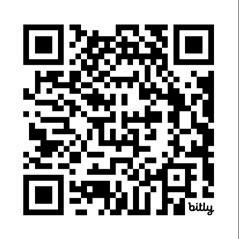




.A.S.UNI.OCROTOMDROFYB ROTOMLAREDEFELBACILPPALLAOTSMROFN NISDRADNATS FOE ERUTCAFUNAM .EVOBANWOHS 00000 B TA 0 042 53/aPk :RWAGRAER BL5233 GK8051 LS61R07/532P J0.7X61 :RWVG GK7662/BL0885 HTIWSERITSMIR ISP DLOC HTIWSERITSMIR ISP DLOC 5800F3810T
00000 ⁄⁄⁄⁄H⁄⁄ ⁄F⁄ ⁄YB⁄ ⁄⁄OYO⁄
⁄W⁄G B⁄⁄⁄⁄⁄ ⁄ ⁄W⁄G ⁄ ⁄F ⁄ B⁄866⁄ ⁄ ⁄⁄ B⁄866⁄ ⁄⁄H⁄ ⁄⁄⁄⁄H⁄⁄
O⁄ ⁄⁄⁄
⁄O⁄O⁄ G⁄⁄⁄⁄⁄⁄⁄F⁄⁄⁄⁄ ,
⁄⁄⁄OF⁄O⁄
⁄⁄⁄⁄⁄⁄F ⁄O⁄O⁄ ⁄⁄⁄⁄H⁄⁄
⁄F⁄H⁄
⁄⁄⁄⁄ FO ⁄⁄⁄⁄⁄⁄F⁄⁄⁄⁄ ⁄WOH⁄ ⁄⁄OB⁄ ⁄ ⁄⁄⁄P ⁄ ⁄⁄⁄ ⁄⁄⁄ ⁄ ⁄⁄⁄⁄ ⁄⁄⁄⁄⁄⁄ ⁄KGP⁄⁄⁄⁄ ⁄ ⁄⁄⁄⁄⁄ ⁄⁄⁄⁄ ⁄⁄ ⁄ ⁄⁄ ⁄⁄ ⁄ ⁄7⁄8⁄ ⁄⁄⁄⁄⁄⁄⁄⁄⁄⁄⁄⁄⁄⁄⁄⁄⁄ YK⁄⁄⁄⁄⁄K , ⁄⁄⁄ ⁄ ⁄⁄ ⁄ ⁄⁄
EXTPNT: RC: DS0: WB BRK INTTR TP/PS R AXLE TR SPR 4 4 GP K 45 V DB F05 UTC
VEHICLESAFETY
EFFECTON
VIN:TYPE: 00000000000000000 MPV AT 205 kPa UA 13 3U51B VEHICLEEMISSION CONTROLINFORMATION toregulations: 2015 Fuel: Gasoline ds: LDV/TIER2C/ULEVqualified NG ⁄⁄ ⁄⁄ ⁄ ⁄⁄⁄ ⁄ ⁄⁄⁄⁄ ⁄⁄⁄⁄⁄⁄ ⁄ ⁄ ⁄⁄⁄ ⁄⁄⁄⁄⁄ ⁄ ⁄⁄⁄⁄⁄ ⁄⁄⁄⁄ ⁄⁄ ⁄ ⁄⁄ ⁄⁄ VEH EMISSIONCONTROLINFORMATION egulations: 2016 MY Not for sale es with California e ns standards. TWC/HO2S/WR-HO2S/CAC/TC/DFI T2B4 LDV L Group:GFMXV02.3VJW Evap MXR0125NBV No adjustments neede ABZ
N ERS I EH re a: C HO2S/WR B Auto Data Labels To Visit Our Website SCAN HERE FOR ADDITIONAL INFORMATION ABOUT AUTO DATA LABELS: visit our website at www.AutoDataLabels.com email us at labels@AutoDataLabels.com or call us at (631) 667-2382 Gro MXR A ACITY sh ul EE UALFOR URE 4 EASY WAYS TO ORDER LABELS! Contact Us : Contact your LKQ/Keystone Local Sales Rep Upload your photos to the Website: www.AutoDataLabels.com Email your photos: Labels@AutoDataLabels.com Use the App: Download the ADL App And Upload your Photos I LEEM
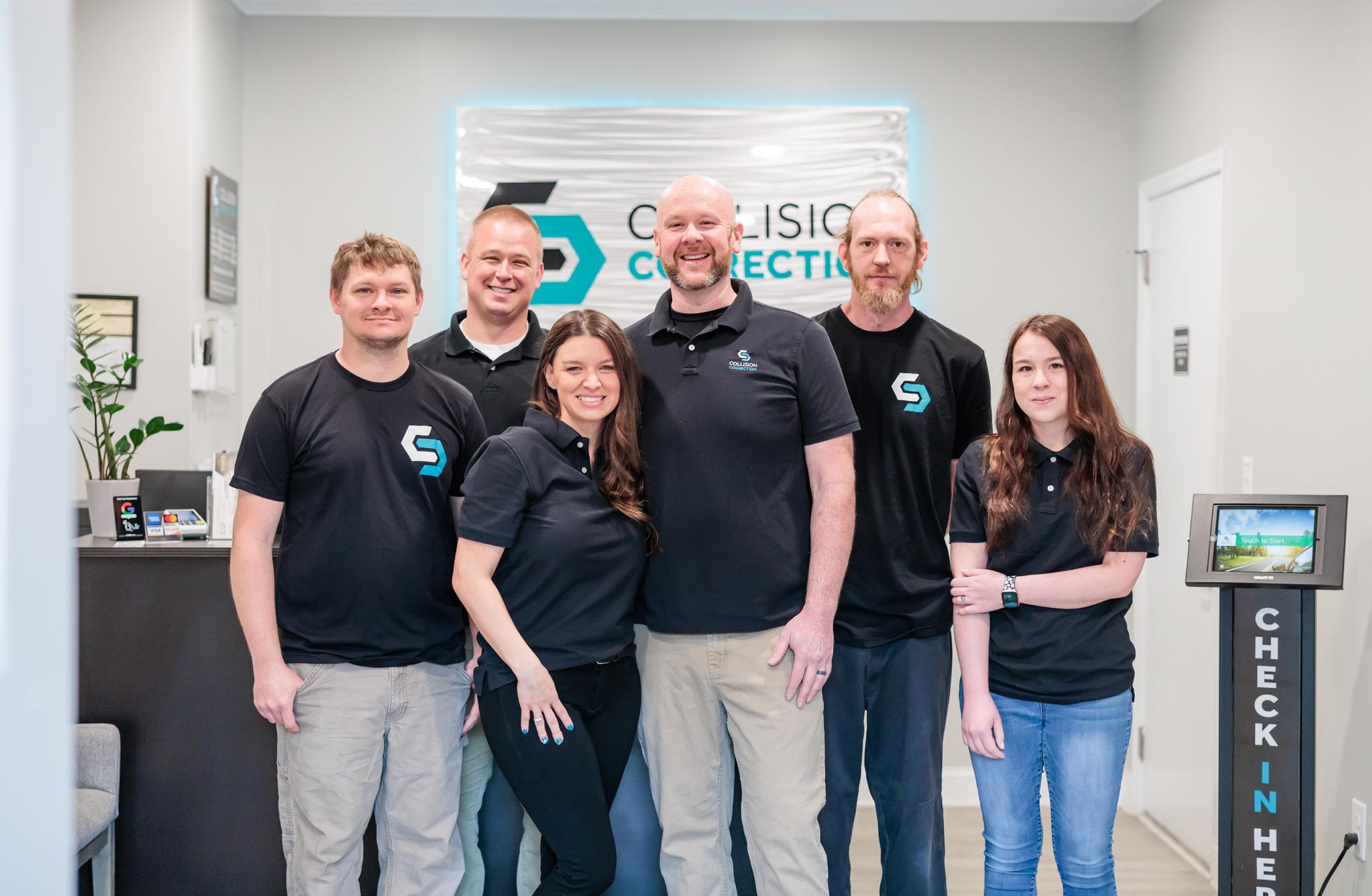
3 May 2024 fenderbender.com MAY CONTENTS 28 FROM SIDE HUSTLE TO THRIVING BUSINESS Darryl Liechti’s shop is growing rapidly, thanks to his focus on customer-centric, honest operations. BY LINDSEY GAINER 22 HOW TO MITIGATE COLLISION REPAIR SHOP FIRE RISK Identify these shop hazards to increase safety and aid regulation compliance. BY JAY SICHT FEATURE PROFILE 05.24 | VOLUME 26 | NUMBER 05 FenderBender (USPS Permit 25614), (ISSN 1937-7150 print) is published monthly by Endeavor Business Media, LLC. 201 N Main St 5th Floor Fort Atkinson, WI 53538. Periodicals postage paid at Fort Atkinson, WI, and additional mailing offices. POSTMASTER: Send address changes to FenderBender, PO Box 3257, Northbrook, IL 60065-3257. SUBSCRIPTIONS: Publisher reserves the right to reject non-qualified subscriptions. Subscription prices: U.S. ($90 per year). All subscriptions are payable in U.S. funds. Send subscription inquiries to FenderBender, PO Box 3257, Northbrook, IL 60065-3257. Customer service can be reached toll-free at 877-382-9187 or at fenderbender@omeda.com for magazine subscription assistance or questions. Printed in the USA. Copyright 2024 Endeavor Business Media, LLC. All rights reserved. No part of this publication may be reproduced or transmitted in any form or by any means, electronic or mechanical, including photocopies, recordings, or any information storage or retrieval system without permission from the publisher. Endeavor Business Media, LLC does not assume and hereby disclaims any liability to any person or company for any loss or damage caused by errors or omissions in the material herein, regardless of whether such errors result from negligence, accident, or any other cause whatsoever. The views and opinions in the articles herein are not to be taken as official expressions of the publishers, unless so stated. The publishers do not warrant either expressly or by implication, the factual accuracy of the articles herein, nor do they so warrant any views or opinions by the authors of said articles.
07
DRIVER’S SEAT
I-CAR’s RTS App
Should be in Your Technicians’ Toolbox
08
PAST THE PAGE
I-CAR Leads
Forward as it Celebrates its 45th Year
11 BREAKDOWN
Caliber’s apprenticeship program helps combat the technician shortage
16
NUMBERS How ADAS is affecting vehicle repairs
14
LIGHT HITS
The latest stories from around the industry
18 Q&A
When’s the right time to jump into EV repairs?

32
32 THE SOP
How digital marketing can be an effective tool
35 OPERATIONS
Design your shop for efficient workflow COLUMNS 20
38 CASE STUDY
‘Drive-through MRI’ Spots Hidden Damage
40 OPERATIONS Implement a quality assurance process for lean
STEVE TRAPP


SHOP PROFITS
With time and strategic planning, you can manage your shop from afar BY
42 COLLISION COURSE


Are your customers’ vehicles vulnerable to hacking and ransomware?
44
DUE PROCESS
Strategies to cultivate loyalty and retain talent in a private equity era
4 May 2024 fenderbender.com QUICK FIX
STARTER
14
CONTENTS MAY
LOBSIGER
GREG
BY TIFFANY MENEFEE
DREW BRYANT STRATEGY
BY
BY
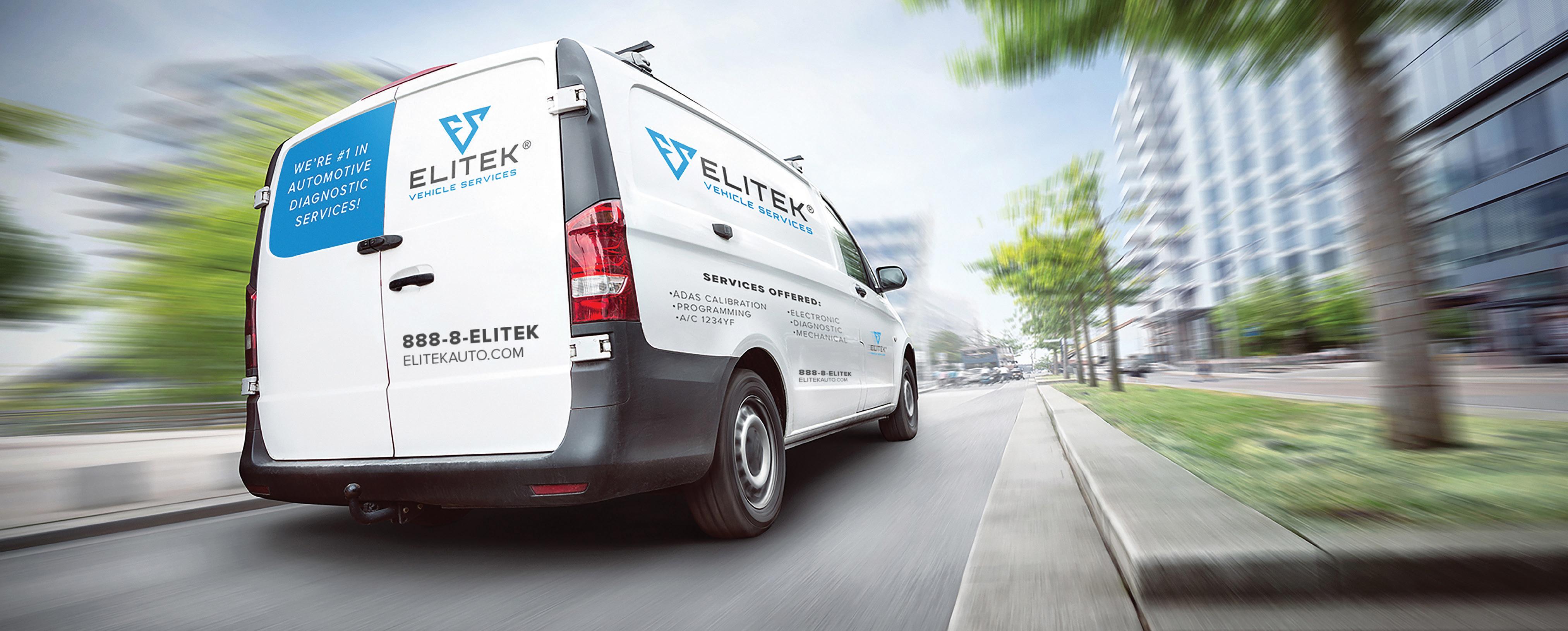




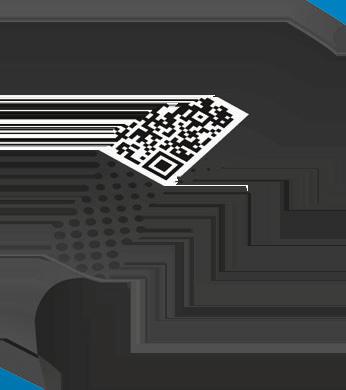


MOBILE AND REMOTE DIAGNOSTIC SERVICES! ELITEK IS THE PREMIER SUBLET PROVIDER FOR OVER 97% SUCCESS RATE FOR REMOTE AND 97% SUCCESS RATE ON FIRST MOBILE VISIT. FOR SUCCESS! ASK US ABOUT OUR SPECIAL PRICING! 888-8-Elitek | (888) 835-4835 ElitekAuto.com MOBILE FEATURES REMOTE FEATURES •OEM Tools / Best Equipment •Best In Class Experienced Technicians •Complete ADAS, Mechanical Services, Advanced Diagnostics And Wire Repair •Over 86 Service Areas And Growing! •Reduce Cycle Time •No Appointment Needed With Response Time Of 2-4 Minutes Via Easy Ticket Creation •Live Chat With The Master Certified Technician Working On Your Vehicle •Branded OEM Reports •Easy To Use App

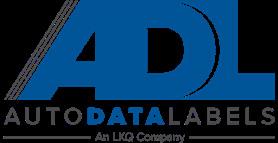

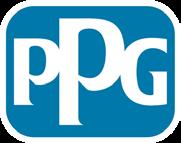




EDITORIAL
Matt Hudson Group Editorial Director
Jay Sicht Editor-in-Chief
Abdulla Gaafarelkhalifa Associate Editor
Kacey Frederick Assistant Editor
Emily Kline Special Projects Editor
Leah Marxhausen Special Projects Editor
Drew Bryant Contributing Writer
Tiffany Menefee Contributing Writer
Greg Lobsiger Contributing Writer
Noah Brown Contributing Writer
Lindsey Gainer Contributing Writer
Todd Kortemeier Contributing Writer
Steve Trapp Contributing Writer
EDITORIAL ADVISORY BOARD
Jordan Beshears Steve’s Auto Body
Sheryl Driggers Collision Advice
Frank Rinaudo Industry Consultant
Jason Mundy Mundy’s Collision Center
Stan Medina Certified Collision Works
SALES
Andrew Johnson Associate Publisher ajohnson@endeavorb2b.com
Mattie Gorman-Greuel Associate Sales Director
Cortni Jones Director of Business Development
Diane Braden Account Executive (National Accounts) dbraden@endeavorb2b.com
Marianne Dyal Account Executive (National Accounts) mdyal@endeavorb2b.com
Chad Hjellming Account Executive (National Accounts) chjellming@endeavorb2b.com
Lisa Mend Account Executive (National Accounts) lmend@endeavorb2b.com
Martha Severson Account Executive (National Accounts) mseverson@endeavorb2b.com
Kyle Shaw Account Executive (National Accounts) kshaw@endeavorb2b.com
Sean Thornton Account Executive (National Accounts) sthornton@endeavorb2b.com
Ryan McCanna Administrative Assistant
ART AND PRODUCTION
Mariah Straub Production Manager
Jen George Ad Services Manager
Mitch Bradford Art Director
ENDEAVOR BUSINESS MEDIA, LLC
CEO Chris Ferrell
President June Griffin
COO Patrick Rains
CRO Paul Andrews
Chief Digital Officer Jacquie Niemiec
Chief Administrative and Legal Officer Tracy Kane
EVP Endeavor Business Intelligence Paul Mattioli EVP Transportation Kylie Hirko
VP and Group Publisher Chris Messer
HOW TO REACH US
Endeavor Business Media, LLC
571 Snelling Ave N Saint Paul, MN 55104 tel 651.224.6207 fax 651.224.6212
The annual subscription rate is $90 (U.S.A. only) for companies not qualified to receive complimentary copies of FenderBender.
LETTERS TO THE EDITOR editor@fenderbender.com
Opinions expressed in FenderBender are not necessarily those of Endeavor Business Media, and Endeavor Business Media does not accept responsibility for advertising content.

6 May 2024 fenderbender.com CLICK ON THE LOGO BELOW FOR PRODUCT INFORMATION CONTENTS ONLINE EXTRAS ProColor Collision USA LKQ Corporation PPG Industries CARSTAR
Axalta Coating Systems
AUTEL Motor Age Training Auto Data Labels Elitek Vehicle Services SATA USA Inc.
Car-O-Liner
READY ACCESS TO THE CORRECT REPAIR INFORMATION
I-CAR’s RTS App Should be in Your Technicians’ Toolbox
WITH INCREASED VEHICLE COMPLEXITY, the need to access and follow OEM repair information has never been more critical to be able to perform complete, safe and quality repairs. It's part of what FenderBender has promoted in our inaugural Best Repair Planner/Estimator Award. At the beginning of April, I-CAR rolled out its Repairability Technical Support (RTS) Portal mobile app for technicians, available for Android and Apple products at Google Play or the App Store, respectively. It's enhanced the desktop version of RTS, which has been around for about 10 years and was first offered for free to the industry as part of I-CAR's COVID-19 Industry Relief Program before the complimentary access was extended in perpetuity.
This is important because many technicians and other production staff may not have ready access to a computer, but they do have a cell phone in their pocket. The app is easy to navigate and includes features such as access to short technical articles and OEM information such as requirements for calibration, partial part replacement, restraints system part replacement, hybrid and electric vehicle disable procedures, glass replacement, and general best practices.
Users can search "Ask I-CAR" for the most common inquiries for specific collision repair information, and can submit a new question, if needed. The app is only beginning, says Scott VanHulle, manager of Repairability Technical Support (RTS) and OEM technical relations, with additional
functionality to come. As an example, the app currently allows the user to take photos of collision repair work with the mobile device and save them to the app. In the works is the ability to scan the VIN instead of typing in each digit.
For more information or for a download link, go to rts.i-car.com.

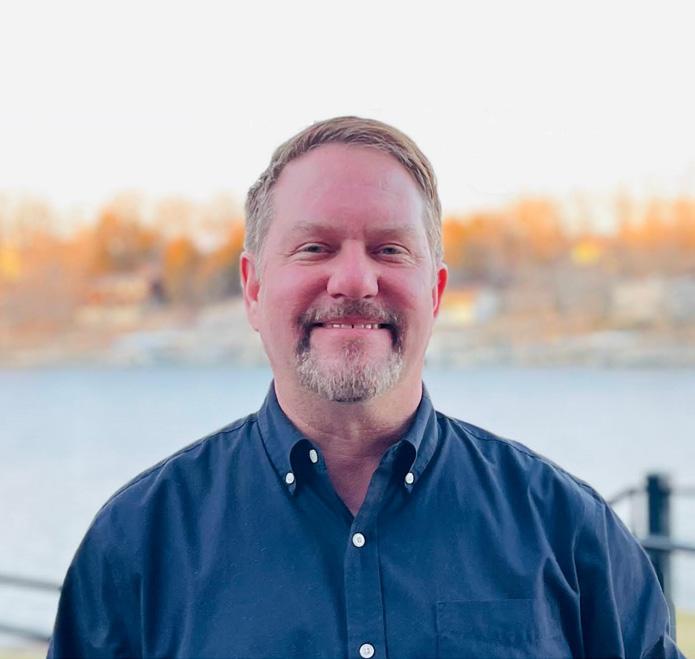

7 May 2024 fenderbender.com DRIVER’S SEAT JAY SICHT EDITOR-IN-CHIEF jsicht@endeavorb2b.com
I-CAR LEADS FORWARD AT NATIONAL MEETING
AS THE ENERGETIC Alan Parsons Project “Sirius” (also the Chicago Bulls’ theme song) played through the speakers, the Inter-Industry Conference on Auto Collision Repair (I-CAR) opened its 45th anniversary National Meeting Friday evening general session with its “Leading Forward” theme at the Lincolnshire Marriott in the Chicago suburb of Lincolnshire, Illinois, April 5-6.
I-CAR CEO and President John Van Alstyne said I-CAR’s mission statement has been refined since he began with I-CAR 14 years ago to include all stakeholders in the ecosystem, such as glass installers and ADAS service providers, which also include dealerships that perform ADAS calibrations.
The organization has a number of short-term and long-term goals, he said, but “Leading Forward” reflects its number-one goal and strategy to “establish I-CAR as the recognized leader and industry subject matter expert on vehicle repair, technology and educational programming.”
It includes focusing on providing more technical advisory services to the industry including but not limited to providing expertise on subjects such as planning for investments for equipment and facilities and insights into emerging technologies. It could also potentially mean working with OEMs on designing for repair.
Van Alstyne, who in the same speech announced his retirement at the end of 2025, said the organization will continue to change along with the market and technology.
“We need to be nimble, flexible, and innovative as we think about how we work,” he said.
“The operating infrastructure at I-CAR has really evolved over the past 14 years that I’ve been here. It doesn’t matter if it’s IT platforms or HR processing or financial systems, or how we deliver training, how we schedule training, everything is fresh in the I-CAR world today, and working, I think, a lot better than it ever has.”
Got Techs? Recruiting and Retaining Talent
Dara Goroff, I-CAR vice president of planning and industry talent programming, spoke in Saturday morning’s general session.
In its survey of nearly 840 collision repair technicians conducted with the Society of Collision Repair Specialists with Ducker Carlisle late last year, job satisfaction was found to be derived not so much from pay as much as it is being acknowledged of superior job performance and otherwise appreciated by one’s employer.
“And not only that, they want to grow you because they see your great potential,” she said. “That is when you create retention.”
Arianna Sherlock, senior director of marketing, spoke about the Collision Careers marketing initiative, which she compared to the successful ‘90s “got milk?” ad campaign.
“We are trying to do for you what the California Milk Processor Board did for the milk industry,” she said. “Nobody sees our campaigns and comes to I-CAR, right? They’re coming to your schools, to your shops, and that is exactly why we are investing in this and why we’re in this game.”
Similar to that campaign, Collision Careers is consumer-focused to reach an audience “that we’ve never really been after before.”
The collision repair industry has “an awareness problem,” she said.
Not only are students making decisions about careers before high school, she said; they don’t make them in isolation.
“You have to have his parents on board; you have to have a teacher or a counselor who’s introducing the concept and encouraging them.”
Putting RTS in the Technician’s Hand
The Repairability Technical Support was brought to life in 2014, Van Alstyne said, to make sure the industry had access to the repair information that is critical to fixing cars correctly. RTS access is complimentary, and the next development of that is the new RTS mobile app for technicians.
Scott VanHulle, manager of Repairability Technical Support (RTS) and OEM technical relations, noted that technicians often don’t have ready access to a computer during the workday, but they do have a cell phone. The app allows access to technical information and articles, and it can save the technician’s role to speed access to, for example, that information relevant to a structural repair technician.
“We couldn’t really reach the technicians who often need that information at their fingertips because they’re working on the car today and they have a question. These are the people we need to help get that information out to as quickly as possible, because if the repair planner did a great job, that’s one thing. But also if they run into something that was missed or they didn’t understand and they have a question today, we can help answer that.”
fenderbender.com/linkedin fenderbender.com
8 May 2024 fenderbender.com PAST THE PAGE
VIDEOS | PODCASTS | WEBINARS | NEWS Visit FenderBender.com/news for daily updates from around the collision repair industry. @fenderbendermag

Efficient. Silent. X-nozzle system.

SATAjet X 5500
State-of-the-art paint systems and the latest application recommendations open up new possibilities, but also pose new challenges for professional painters.
The SATAjet X 5500 featuring the new X-nozzle system defines a completely new application standard for the future.
Revolutionary: The X-nozzles are taking atomization to a whole new level
Noticeably quieter: reduced noise level in the relevant sound frequency ranges due to optimized flow geometry of the whispering nozzle
Individual: Matches any application requirement, such as specific characteristics of the paint system, climatic conditions and application method (application speed/control)
Precise: Optimized material distribution for enhanced spraying uniformity and atomization with both spray fan shapes
Low maintenance: No air distribution ring required, which ensures a much easier and faster cleaning process
Efficient: The optimized atomization concept allows for considerable material savings
Phone: 800-533-8016
E-mail: satajet@satausa.com
INFO www.sata.com/x5500
SATA USA Inc. 1 Sata Drive • PO Box 46 Spring
MN 55975
Valley,
www.satausa.com
BREAKDOWN
COMBATING THE TECH SHORTAGE VIA APPRENTICESHIP
Caliber Collision’s Eddie Hightower talks about the TAP program and how it can help attract more trained technicians across the country.
By ABDULLA GAAFARELKHALIFA
ACCORDING TO A 2023 TechForce Foundation report, there are over 30,000 unfilled collision repair technician positions.
This tech shortage is significant enough that industry leaders, such as Caliber Collision, are taking action to combat it and in unique ways, including through its Technician Apprenticeship Program
“We started to see a fall-off of people starting to go to technical training schools,” said Eddie Hightower, the senior vice president of sustainability and social responsibility at Caliber Collision. Hightower said this shortage made it difficult not only for Caliber but the entire collision repair industry to hire new technicians.
No Country for Young Men
According to a 2019 research study by Education Next, between 1990 and 2009 as the average number of academic credits high-school students earned increased, the number of vocational credits dropped by 14 percent, or roughly two thirds of a year of vocational studies.
Donna Wagner, assistant vice president of the ASE Education Foundation, added to this topic with FenderBender. “Some of that is fueled by the belief that you need a four-year college degree to be successful,” she said. Hightower added that interest in other career fields has also been partially responsible in the last few decades. Accord-
ing to the Visual Capitalist, the number of completed bachelor’s degrees for computer and information science jumped by 144 percent from the 2010-11 academic year to the 2020-2021 academic year.
Demographic changes are among the other factors leading to the tech shortage, Hightower pointed out. According to the U.S Census Bureau, there has been a significant rise in the population aged 65 and above. This age group, which accounted for 13 percent of the total population in 2010, increased to almost 17 percent in 2020, marking the highest percentage increase for this age group in the country’s history. This indicates a decline in birth rate, meaning fewer people are entering vocational programs.
These demographic shifts are also shown in the collision repair industry. According to data gathered by Zippa last updated in July 2023, 63 percent of collision repairers in the U.S. are 40 years or older. The remaining 37 percent are under 40. The data from Zippa also shows, unsurprisingly to many, that the field is heavily male-dominated, with 95 percent being male.
Wagner added that because repairers are much older in this field, there’s more overall reluctance to be educated more on changes in the auto industry, particularly when it comes to ADAS or EVs.
Blueprinting For Shortage Solution
Part of Hightower’s role at Caliber is to oversee the expansion of the Technician Apprenticeship Program (TAP), which started in 2021.
TAP is a free, hands-on auto body technician training program that pairs a potential apprentice with an experienced technician in a Caliber Collision center to take their skills to the next level — while also getting paid.
“We are the largest multi-shop operator for collision repair centers in the United States,” Hightower said on why Caliber started TAP. “We have about 1,700 locations across 41 states in the United States. We now employ over 31,000 people in those communities across the United States. We knew that our position as leaders in this space is that we not only needed to do something, but we could also do something.”
Hightower described TAP as a competency-based program that lasts a year. He also added that it’s not just targeted at high school or post-high school aged students, they also welcome people of all age groups and backgrounds, especially those who want to make a career change.
What might be seen as the most attractive aspect of TAP is that apprentices are treated just like employees. Not only are they paid, but they also get the same benefits, such as PTO or a 401(k).
11 May 2024 fenderbender.com QUICK FIX NEWS | IDEAS | PEOPLE | TRENDS
“At the end of it, they get a high-paying career,” Hightower said of TAP. “Really, the sky is the limit.”
Although the TAP is open to people of all age groups, Hightower is particularly interested in encouraging younger people to enter the program because younger folks are typically more tech-savvy. “Cars these days are really just computers wrapped in metal.”
It’s not just the vehicles themselves that are more computerized, but the way to obtain the knowledge to fix a particular vehicle is computerized.
“As late as 10 or 15 years ago, when you had a repair procedure you needed to use, you needed to pull down a book, and you were looking up a physical book for a procedure for a particular make and model for a vehicle,” Hightower explained. “Now
you’re doing all of that via computer, and on a tablet mostly in the back of our shops.”
“It really isn’t the car repair provider that you would think of sometimes,” he said. “Sometimes you think of the grungy, greasy, oil-stained, dust-everywhere things of the past. No! These are really tech-savvy, tech-forward places where we’re working with computerized technology-loaded vehicles of today. Technology is really an attractor for people entering our TAP program.”
The other reason why the program is attractive to younger people, particularly Generation Z/Zoomers, those people born in the late ‘90s to early 2000s, is that a background in collision repair gives those who have it more control over what they do with their career. Those in TAP are not limited to working in Caliber Collision centers after they complete the one-year apprenticeship.
Hightower also points out that Zoomers, a much more environmentally cautious generation, might stick around with Caliber because they learn about Caliber’s commitment to sustainability. “Just last year, we completed a 100-percent LED lighting retrofit in all of our centers,” Hightower said.
Caliber’s efforts aren’t just focused on getting new technicians, but also retaining older and experienced technicians because “they’re the lifeblood of our apprenticeship program,” he said.
As of February, Hightower reported, Caliber Collision invested more than $65 million into the program, and they’ve graduated more than 1,000 techs out of the program since it started. Soon, they hope to see that number double every year as TAP continues.


12 May 2024 fenderbender.com QUICK FIX
WE’RE SOCIAL CONNECT WITH US ON YOUR FAVORITE SOCIAL MEDIA SITES WWW.FENDERBENDER.COM
Senators and Congressmen
Throughout the Land Hightower said that Caliber has been campaigning for more government support for TAP in the form of grants through the Department of Labor.
“We hope to become a grantee this year,” he said.
“When [apprentices] come out of this training program, we’re able to demonstrate to [politicians] what the technicians’ earning potential is over time, and they get it,” Hightower said. “They understand the impact on the economy.”
“We’ve talked to conservative members of Congress, progressive members of Congress, independent members of Congress, and everyone has just been so supportive of this program. There’s a lot of support from Capitol Hill because this issue is apolitical.”
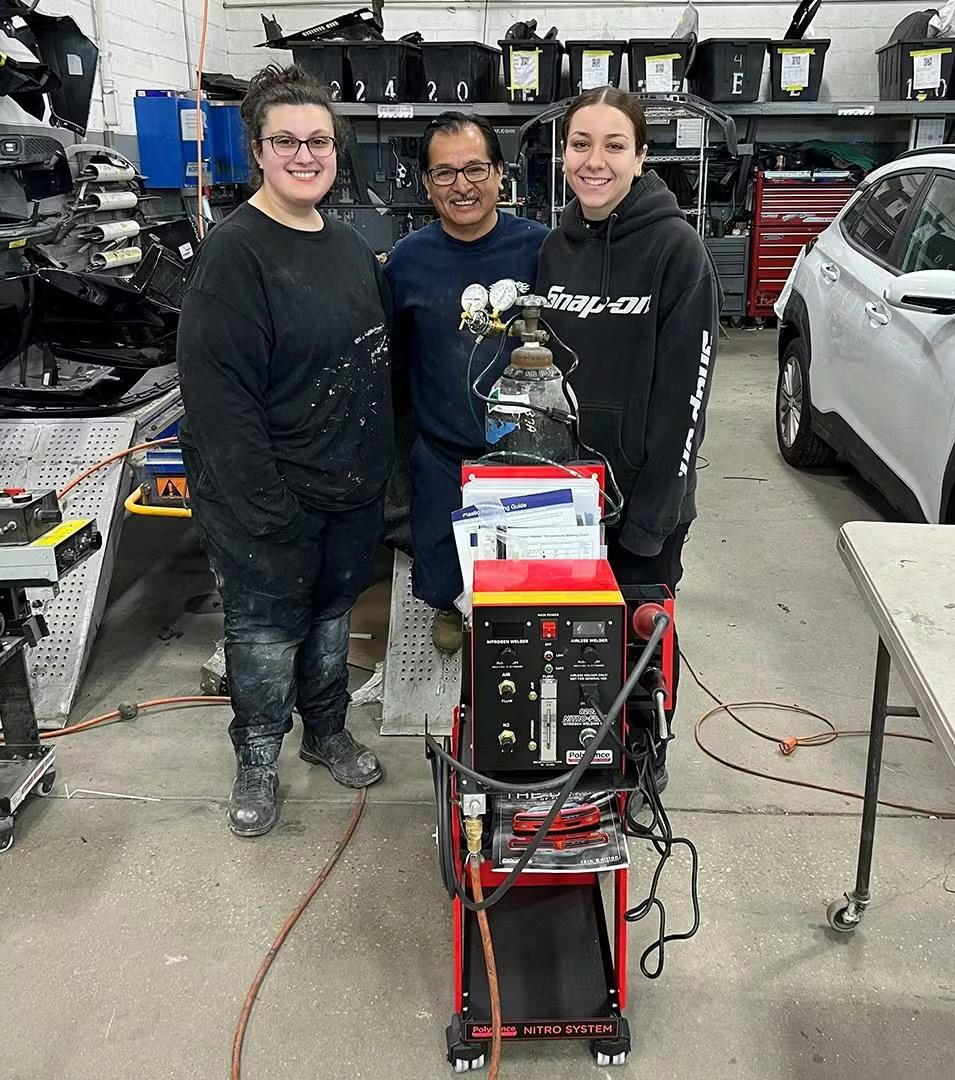

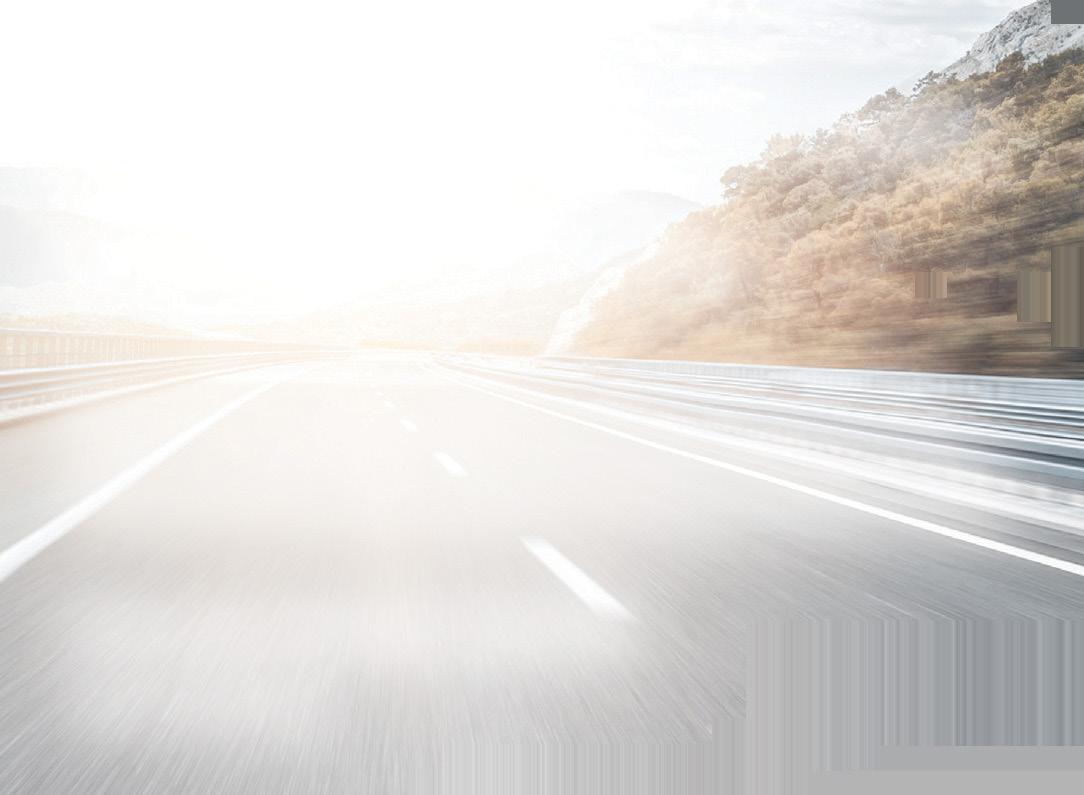


13 May 2024 fenderbender.com
Julio Ruales , a technician at Caliber Collision, stands behind Polyvance’s 8202 Nitro-Fuzer, flanked by TAP apprentices Jessica Dailey (left) and Emily Alberghini (right).
Copyright © 2023 Axalta Coating Systems, LLC and all affiliates. All rights reserved. AN AXALTA COATING SYSTEMS BRAND Get more from your finish. Nason ®XL is an affordable, easy to use refinish system available in thousands of collision-quality colors. Deliver a long-lasting finish with Nason ®XL. VALUE THAT LASTS nasonxl.us 2405FB_Axalta.indd 1 3/26/24 1:43 PM
PHOTOS COURTESY CALIBER COLLISION
LIGHT HITS
ON TIKTOK: BODY SHOP SENDS CAR TO SALVAGE AUCTION BY ACCIDENT
An insurance claims adjuster, who is also a TikTok influencer, found out a body shop mistook her customer’s Cadillac Escalade for a Ford Explorer and accidentally sent their car to a Copart salvage auction facility.
“How did you confuse an Escalade with a Ford Explorer?” she asked while retelling her account with the body shop. “Have you called the customer and told them how you lost their car? And that you towed it to Copart, the salvage yard?”
The video has been viewed over 3.5 million times.
LARGEST COLLISION CENTER IN THE NORTHEAST NOW OPEN
Last week, McGovern Auto Group (MAG) announced the grand opening of the MAG Collision Center, McGovern’s new flagship body shop and the largest body shop in the Northeast. This center promises to reshape collision repair services across Massachusetts and beyond, according to a news release.
The facility, located in Shrewsbury, is a 75,000 square foot and the auto group’s third collision center in Massachusetts, according to their website.
The center’s 40 repair bays can accommodate any passenger or commercial vehicle. Specialized zones cater to the intricate requirements of body repairs, paint prep, paint mixing, detailing, and refinishing. The facility also houses four downdraft-enabled paint booths and a separate paint system for fleet and commercial vehicles.
The MAG Collision Center represents a multimillion-dollar investment in McGovern’s depth in auto repair in the Northeast. Beyond resources, McGovern has furnished the facility with next-generation equipment, materials, and processes to truly optimize and modernize collision services.
For fleet customers, the MAG Collision

Center offers a dedicated 60-foot truck paint booth and prep deck to cater to heavy truck, emergency vehicles, tractor trailers, dump trucks, or equipment repair needs. This capability underpins the shop’s readiness to serve commercial customers across a diverse range of industries while positioning itself as the foremost collision service provider for municipalities in Massachusetts.
The MAG Collision Center will also be home to McGovern’s transport and vehicle mobility division, McGovern Transport, housing its fleet of 14 trucks. With significant regional growth planned for McGovern’s vehicle transportation services, MAG Collision will play an integral role in keeping the division’s trucks meticulously maintained while recruiting top CDL driving talent.
“We are actively looking to grow our talented 30-person team by nearly 50%, with 10 open roles for experienced auto body technicians, paint technicians, estimators, and customer service representatives,” said Brian D’Alesio, general manager of the MAG Collision Center. “I encourage any qualified candidates looking to advance their careers with a growing, dynamic company to inquire about openings.”
The major launch follows a milestone year for McGovern Auto Group, having expanded to 29 dealerships across
Massachusetts, New York, and New Hampshire while amassing over $2.2 billion in annual revenues.
VETERAN AND SINGLE MOTHER ARE GIFTED WITH REFURBISHED CARS
A veteran and a single mother in Port Charlotte, Florida, were both presented a vehicle thanks to the National Auto Body Council Recycled Rides program along with car donor Allstate and repair partner Toyota of Richardson, according to a news release.
NABC, Allstate, and Toyota of Richardson, a Berkshire Hathaway Automotive company, presented a fully refurbished 2019 Jeep Cherokee to Nathan Burrow.
Burrow and his family are always eager to go out of their way to put others above themselves. A decorated veteran, Burrow was injured while serving as a medic in the army in Iraq. Burrow is an alumnus of the nine-week Redefine program of the Adaptive Training Foundation, the organization that nominated him for the car donation. The vehicle will help in his efforts to train other disabled veterans suffering from similar impairments.
“What this means to me is just beyond belief,” said Burrow, reacting to the donation. “I hope that there is a time that we can do it somehow for someone else.”
14 May 2024 fenderbender.com QUICK FIX
MCGOVERN AUTO GROUP
NABC, Allstate, and Toyota of Richardson also presented a fully refurbished 2017 Toyota Camry to Wainesha Stevenson.
Stevenson and her daughters have shown resilience through tough times. All three have juggled work, education, and the demands of everyday life with an indomitable spirit. The young women have finished high school and are embarking on higher education and career goals and a brighter life ahead. The donated car will help them all continue on their journeys. Family Promise of Irving nominated Stevenson for NABC Recycled Rides.
Stevenson was elated to receive the renewed vehicle.
“2024 has started out with a little sunshine,” she said at the presentation. “This is a way to get back and forth to work to earn a living for my family. I am here to be a provider and protector for my girls, and this will enable me to do that.”
Tom Wolf, director of strategic accounts, U.S. and Canada for PPG, said of the presentations: “As we look back on the impact of the PPG MVP Conference, I want to express my sincere gratitude to the PPG Business Solutions team and all who contributed. Collaborating with the NABC and Berkshire Hathaway Automotive to gift two NABC recycled rides to deserving families in need exemplifies the power of partnership and generosity. Thank you for your dedication and commitment to making a tangible difference in people’s lives.”
THE LEGACY OF DON HENTHORN, BENDPAK FOUNDER
Don Henthorn, owner and founder of BendPak Inc., peacefully passed away at home Thursday, March 28, at the age of 85. Under his leadership, BendPak has grown from a small machine shop to one of the world’s leading manufacturers of car lifts and automotive service equipment. Management and operations of the privately owned company are unchanged.
Henthorn transitioned day-to-day management to the current leadership team in 2022 as part of an established succession plan. Serving as chairman emeritus, he continued to coach the team, coming to the office six days a week.
Henthorn enlisted in the U.S. Army at 19 years old. He was stationed at a Nike Ajax missile site in Connecticut. While there, he met Virginia Ann “Ginger” Eib, and they married two days after he was discharged in 1959. Three days after that, they moved to California, where he went to work in the burgeoning aerospace industry. After learning all he could, he started Quality Machine & Associates (QMA) in Simi Valley, California. This premier job shop specialized in precision machine work for aerospace and defense giants like Rocketdyne, Rockwell, and Hughes Aircraft.
Not content with the “feast or famine” workload of a job shop, Henthorn labored after hours to develop and patent specialty tools QMA could market itself. The most successful of these included the 5ivePak, a portable combination coil spring compressor, U-joint press and gear-puller; a MacPherson strut spring-compressor; and a portable exhaust pipe expander.
By the 1970s, Henthorn was increasingly focused on building equipment for the then-bustling muffler shop industry. In 1977, he oversaw construction of the company’s first new building, a 20,000-square-foot manufacturing facility in Moorpark, California. Two years later, QMA introduced a hydraulic tubing bender for muffler shops, and Henthorn was inspired to change the company name to match.
“BendPak” was born. In 1983, responding to customer requests, Henthorn introduced BendPak’s first four-post lift and entered the vehicle lift market.
Over the ensuing decades, BendPak continued to grow. Today, the company has manufacturing and distribution facilities around the world and employs
more than 275 people. In 2023, BendPak moved its global headquarters into a LEED PlatinumTM certified administrative building in Agoura Hills, California. Work is underway on the BendPak Industrial Complex, a huge light industrial space being developed in Mobile County, Alabama, near the company’s recently expanded East Coast campus.
Never one to seek awards or accolades, Henthorn was a believer in hard work. Motivated by the fear of failure and the desire to expand his mind and his business, he pushed the company to continuously improve and grow. For decades, he was the first person in the door every day, starting between 5 and 6 a.m., Monday through Saturday. When asked the secret to BendPak’s success, he would answer simply, “We outwork everybody.”
Henthorn took his responsibility for the safety of millions of mechanics around the world very seriously and was committed to ensuring that BendPak produced superior products.
“We at BendPak wholeheartedly hold the philosophy that only going above and beyond on every product, for every customer, will keep us growing in this business,” he wrote in a letter to customers on BendPak.com. “When BendPak started, I was the sole name and voice attached to the company’s product development and operations. Today, BendPak exists beyond the control of just a few sharp minds. The hundreds of employees we hold dear are heard from and appreciated on a daily basis, which is why people continue to want to work here, and it’s why we’ll continue to thrive for generations to come.”
Henthorn could often be found out in the shop tinkering and inventing things. He also enjoyed golfing and sharing memories with friends, family, and colleagues.
Henthorn is survived by his wife, Ginger, daughter, Susan, and grandchildren Annika, Reagan, Carson, and Kennedy. He was preceded in death by his son, Gary.
15 May 2024 fenderbender.com
HOW ADAS IS AFFECTING VEHICLE REPAIRS
IT’S PROBABLY NO SURPRISE that each new model year brings with it an increasing number of advanced driver assistance system (ADAS) components requiring replacement and/or calibration.
According to CCC Intelligent Solutions’ Crash Course Report (www.cccis.com), nearly 60% of repairable appraisals in 2023 of vehicles made in 2014 included a scan, and only 6% included calibration. For vehicles manufactured in 2023, slightly more appraisals, just over 70%, included a scan, but 27.6% required a calibration.
And last year, 2023 models required nearly three times as many replacements of cameras, sensors, lidar, and radar components per appraisal vs. 2014 models.
The report notes that ADAS is unlikely to end collisions. And in fact, according to NHTSA’s July 2023 data, speeding-related fatalities actually increased by 19% between 2019 and 2021. The reasons include some drivers over-relying on ADAS technology, misusing or disregarding its use, and human error or the complexity of modern traffic environments.

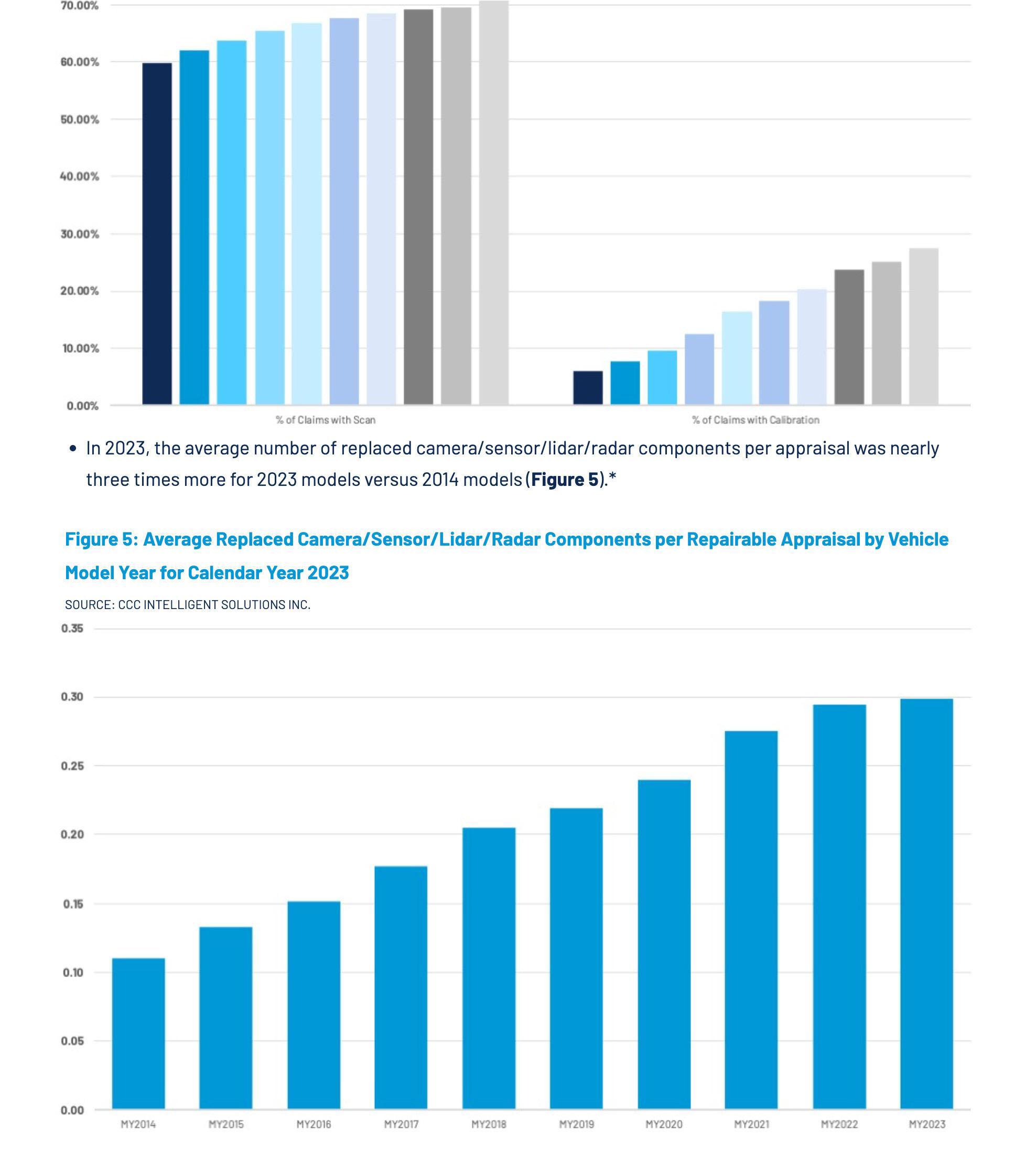

In 2023, the average number of replaced camera/ sensor/lidar/radar components per appraisal was nearly three times more for 2023 models versus 2014 models (Figure 5). *
May 2024 fenderbender.com
NUMBERS
QUICK FIX
Figure 4: Percent of Repairable Appraisals with Scan and Calibration Operations by Vehicle Model Year for Calendar Year 2023
Figure 5: Average Replaced Camera/Sensor/Lidar/Radar Components per Repairable Appraisal by Vehicle Model Year for Calendar Year 2023
SOURCE: CCC INTELLIGENT SOLUTIONS INC.
SAME SYSTEM. SAME GREAT RESULTS. MORE FLEXIBILITY.

Efficiency, sustainability, and ease of use – these are just three of the reasons why PPG’s Envirobase High Performance waterborne paint system is the trusted choice for more than 40,000 body shops around the globe.
But the benefits don’t stop there. The Envirobase High Performance paint system supports fully digitalized repair processes and is compatible with every tool in the PPG LINQ™ digital ecosystem, making it the perfect solution for modern collision centers.
The refinish industry is always evolving. Our PPG experts continue to develop new products that enhance the core Envirobase High Performance waterborne system and help body shops meet changing demands and challenges.
For
PPG ENVIROBASE® HIGH PERFORMANCE
more
envirobase.com The PPG Logo and Envirobase are registered trademarks and PPG LINQ is a trademark of PPG Industries Ohio, Inc. © 2024 PPG Industries, Inc. All rights reserved.
information visit

EV COLLISION REPAIR COSTS AND TRENDS
Kevin FitzPatrick of Opus IVS explains why EVs are so expensive to repair and how to evaluate when is the right time to get certified.
If something is expensive to buy, it’s probably more expensive to repair. As of late, this certainly applies to EVs. According to a 2023 yearly review by Mitchell, the average U.S. repairable EV severity was $6,018, compared to their ICE counterpart, it’s $4,696.
The topic of repair costs for EVs was highlighted in an extreme anecdotal example where Tesla-centric YouTuber, Ryan Shaw, says a fender-bender that damaged his rear bumper resulted in a bill of over $8,700. In a second rear-end collision, his Tesla was so severely damaged that it could not drive away. The cost of completely repairing the car came close to $24,000.
Why are the costs so high? Will it get cheaper at some point? Is it difficult to get certified?
We spoke with Kevin FitzPatrick, Opus IVS senior vice president of North America operations, to learn more.
Why is EV repair so expensive?
“Number one, it’s the [limited] number of facilities repairing EVs. I think that’s one of the biggest factors,” FitzPatrick said. “The other factor is the number of recycled parts that are available to repair these vehicles and the [low availability] of aftermarket parts. Those are the three main factors if we’re going into the costs.”
He emphasized that there’s a lack of options for parts manufacturers given how new EVs still are.
“Tesla, for example, is the manufacturer for most of the parts which leads to longer cycle times in most cases. Anything involving the battery is an instant total.”
FitzPatrick also shared that that
18 May 2024 fenderbender.com QUICK FIX
B y ABDULLA GAAFARELKHALIFA Q&A
ISTOCK / GETTY IMAGES PLUS

repairers often sublet the disarming of the car to a professional to make the EV safe to repair. “In other words, fuses are actually pulled, and the car is brought to a condition where other technicians can put their hands on the vehicle.”
How is the market responding to the high cost of EV repairs?
“Getting more technicians, getting more training,” he said.
He also emphasized the need to increase in the number of qualified and certified technicians so consumers will have more options, therefore boosting competition.
Later, he said that there has been a notable increase in collision repair centers that cater to EVs, but only by a
few percentage points. The reason why there was a slow increase, according to FitzPatrick, is because the demand for EVs by consumers is not growing as fast as many expected.
He also said more vehicle manufacturers are making their presence in the market known, which should eventually increase overall competition in the EV market and drive EV repair costs downward.
If consumer demand is a factor, then why is it so low in the U.S.?
“Unfortunately, the reality in the United States is that the infrastructure needed to support these vehicles didn’t grow as expected,” he said.
“The populace didn’t adopt them in the way the government wanted them to. Younger drivers are certainly adopting them at a much higher rate than older traditional folks such as myself.”
He also recalled the recent ‘deep freeze’ that swept across parts of the country, which exacerbated EV charging problems for owners and drivers.
Aside from the mechanical issues that would occur from meteorological events, the day-to-day ownership of an EV is not what people expected.
Things that FitzPatrick listed as other reasons that will deter those from adopting EVs include:
The cost to charge an EV at public fast chargers can be high.
The short shelf life of an EV tire.
EVs tend to lose more resale value as a percentage compared to an ICE vehicle.
“There are still considerations to be had when adopting EVs as your main mode of transportation.”
Is it easy to get certified?
“Technicians have to take time out of their shop to get training and certified on the repair of these vehicles,” FitzPatrick said. He also emphasizes the safety aspect, which leads to the subletting.
“It’s not a tremendous amount of time. Most of the training takes 30 to 40 hours.”
Is there a projected growth as to how many ev certified collision repair centers will come up or be open considering the demand being lower than what was projected?
“I think all the manufacturers in the U.S. have throttled back on their build projections and I would expect a lot of our larger MSOs to follow suit on what their projections were.”
Despite the low consumer demand, is it still a good idea to get certified and get training?
“I think so,” FitzPatrick said. “It’s a growing vehicle population in any state.”
“I think you have to look at the ballpark for your particular business. If you’re in a metropolitan area, this is something you need to address. Obviously, you should have addressed it already. If you’re in the Midwest or in a rural area, you probably have a little more time.”
“It’s something that every collision repair business owner is going to have to consider soon.”
19 May 2024 fenderbender.com
The Four Stages to Freedom
With time and strategic planning, you can reach the point of managing your shop from afar. But you must learn from folks smarter than you
For many of us who were former technicians who became shop owners or are currently doing both roles, here are the four stages to freedom from our businesses.
Stage 1
The owner is working on cars, answering the phone, ordering parts, writing estimates, dealing with insurers & customers, handling bookkeeping, dispatching work if there are any other employees, maintaining the equipment & building, marketing the business, and more. Some live this life for decades working 70+ hours per week and feel there is no way out. Finding someone to take your spot working on cars in the back is the ONLY way out. Once you search for and hire someone to take your place, you must suck it up and take your tools home!
Stage 2
Now you go to the front, and your new job is to be the manager. You will do everything you did in stage 1, but you can’t work on cars. While managing the front, start documenting everything you do and writing up your tasks as work standards (a clear set of instructions). Now focus on fully training, say, two body techs and one painter.
Stage 3
Now with at least this three-man team in place, your shop should be able to produce $1,200,000 to $1,400,000 in gross sales. Let’s say you are currently taking wages of $100k. You should have an additional $150-250k in net profit. Now it’s time to find that person to replace you in the front! Don’t give me that “There isn’t anyone to hire” garbage, either. I won’t hire any admin folks from the collision repair industry. It’s not that they’re bad people, but they are just corrupted and nearly impossible to retrain. The “greener the better” is what I look for. A person with a good attitude, strong work ethic and a baseline of at least average or above average intelligence can be taught almost anything. You could find this person at your church, or maybe it’s someone who waits on you at a restaurant or even at the Home Depot. Always keep a business card in your pocket; you just never know where you will find them. My two managers came from a John Deere dealership. Once this person is hired, pull out the work standards you created in stage 2 and get them trained!
Stage 4
Once your new manager can do most of your role, you need to get out of the front. Now, move your office home or even build an office in the attic of your shop. No matter what, you must get out of sight of customers and the day-to-day. It’s not that you don’t care about your customers, but it’s amazing now for me how my customers ask for my front admin folks by name and have no idea who I am. Here is your new job:
A. Market the business
B. Go to the Gemba (where the work takes place) to help the employees with processes to make the work easier for them
C. Monitor the finances and business profitability.
D. Within six months or so of hiring a manager, you may need to add a customer service representative, back-end estimator, detailer, parts person, bookkeeper, or other staff. It gets very interesting at this point. How can you leave for vacation and never get a text, call, or email from anyone from your business? You must let go and empower your employees to make decisions. Are they going to make mistakes? Of course! If you scold them for a bad decision or micromanage, you will never get freedom from your business, as they will be fearful to make ANY decisions.They will continue to seek you out for even the smallest things like, “Which sandpaper should I order?”
To get to stage 4, you must seek out folks smarter than you to learn from. These folks can be found in 20 groups from paint companies and independent groups or even individual consultants. A fellow shop owner who is very successful outside of your market can make a great mentor. You must visit their shop and be a sponge. Don’t be afraid to get on an airplane. And you can’t let pride be a barrier, or you will never get out of stages 1-3, let alone see any sight of stage 4. Remember: you must venture out to find these folks; they won’t find you. I would also recommend reading “The E-Myth Revisited” by Michael Gerber. He discusses how we should be building a “franchise prototype.” Another book is “Rocket Fuel” by Gino Wickman, in which he discusses “visionary and the integrator.” In stage 4, the owner can come and go as they please, even add additional shops, and with the right knowledge, achieve a 20%+ NET PROFIT.

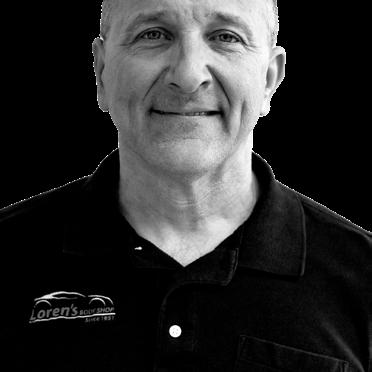
GREG LOBSIGER
Greg Lobsiger has owned Loren’s Body Shop in Bluffton, Indiana, for over 23 years. He has been a member of Mike Anderson’s groups for ten years and had extensive lean manufacturing training.
EMAIL: greg@lorensbodyshop.com
ARCHIVE: fenderbender.com/lobsiger
20 May 2024 fenderbender.com
JOSIE SMITH PHOTOGRAPHY
COLUMNS SHOP PROFITS




A proven business model for 20 years, ProColor Collision is growing! Independent body shop owners driving their business forward are choosing ProColor. Standardized operations, management tools and consolidated technology solutions improve performance. The ProColor team of industry professionals are dedicated to performance excellence offering the sales, operational and marketing support needed to take business to the next level. ProColor Collision is committed to helping shop owners grow their business locally while leveraging established relationships with global insurers, suppliers, and fleet companies. The ProColor PROcess is a winning formula. ProColor Collision USA LLC, 650 Pelham Blvd, Suite 100, St. Paul, MN 55114 ® Registered Trademark of MONDOFIX INC. We train the best. You are the PRO. Find out more at procolor.com

How to Mitigate Collision Repair Fire Risk
Identify These Shop Hazards To Increase Safety And Aid Regulation Compliance
By JAY SICHT / Photos Courtesy of GMG ENVIROSAFE

Mitigate Collision Repair Shop Risk


ment distributor. As I was taking inventory in the mixing room and updating the color library on the computer at the shop of one of our customers, one of the technicians in the adjacent building yelled for me to come quickly. As I turned to the walk door connecting the two buildings, I was shocked to see flames shooting up from the GMT 800-platform Chevy pickup on the frame rack several feet high. As he frantically removed the fire extinguisher from the bracket, a column of black smoke rose to the ceiling and rapidly descended to the floor. The little 10-lb. extinguisher had no visible effect on beating back the flames; it was time to evacuate and call 911.
The shop owner had been welding in new rocker panels as part of a rust repair on the pickup. The owner had put down the MIG welding torch and stepped outside to see the latest specials on the tool truck that had just shown up. What he didn’t realize was there was some noise/ vibration/harshness-reducing foam that had ignited from welding and had begun smoldering and then flared up in his absence. The sole technician who’d remained in the shop and yelled for my help was working on a car with his back turned to the scene 30 feet away, and by
the time he saw the flames, the truck was engulfed. It was a total loss, and other non-driveable works in process were also totaled from smoke damage. The damage throughout the post-frame shop was mostly smoke-related, although the fire burned through the sheet metal ceiling to the bottom chords of the trusses. Thankfully, there were no injuries, and after four to six weeks, the shop was back in business.
Identifying Common Problem Areas
GMG Envirosafe has been helping body shops avoid fires and stay compliant with environmental and safety regulations since 1989. In talking with Kevin Dwyer, product manager about some common violations his company representatives see on site visits, many of the violations may seem like common sense. At the same time, they are also frequent enough that this article can serve as a quick reminder of areas of concern that should be addressed.
The paint department is where most violations occur, Dwyer says. Beginning with the basics, having a paint mixing room with explosion-proof wiring is essential.
“I’d say probably 80 percent of the shops do, but I do run into shops that don’t have one. You need it, because that’s where you’re supposed to be storing all your flammables, such as paint and thinners.”
It should also have a 4” sill at the bottom of the mixing room door to be able to contain all the flammable liquid stored in the room so it doesn’t end up in a drain.
A metal trash can with a metal lid is the only acceptable receptacle for solid waste, as if a fire starts in a plastic trash can, the fire will consume the can and spread.
“If it’s a metal trash can, the fire will stay contained to the can and then it can be put out by putting the lid on top of it, choking any oxygen in there,” he says.
Masking materials with uncured primer and paint material overspray, as
well as disposable paint cups that still contain solvent-borne paint residue, are the biggest sources of flammable material, Dwyer says.
“You’re supposed to drain that residue into the waste drum, but a lot don’t do that; they just chuck it. That can be an issue if it’s solvent paint waste.”
Drums of waste paint and virgin thinner require a ground cable and clamp to be attached to them, a quick step that is often overlooked at the time they are switched. Funnels used for waste paint should have a self-closing lid, and if they’re used with polyethylene drums, they should also include a flame arrestor.
Another violation noted by GMG Envirosafe’s inspectors is missing faceplates for electrical outlets in older shops. Electrical extension cords must have intact ground terminals, can’t be frayed, and cannot be “daisy-chained” (interconnected).
Compressed-gas Cylinder Storage
“One of the most dangerous things is compressed gas cylinders,” Dwyer says, noting spare cylinders must be stored upright and secured with a chain or some other method.
“When we go to the shops, one of the first things we check—and this violation is a big fine from OSHA—when they’re in storage, oxygen and acetylene bottles need to be separated by at least 20 feet. When they’re on a cart and being used for work, they’re fine. They need to be stored away from high-traffic areas and exits as well.”
Oily rags must be disposed of—or stored—in a metal container, such as a flammable-materials metal step can, to avoid a source of spontaneous combustion.
Fire Suppression
Shops must also have some kind of fire suppression in the paint booth, whether it’s a wet system through the building’s sprin-
24 May 2024 fenderbender.com
kler system or a dry system with tanks outside the booth. A dry system must be serviced every six months, and sprinkler heads must remain unobstructed. And don’t forget “No Smoking” signs on the paint booth and in the mixing room.
All fire extinguishers must be solidly mounted with signage above them, have ready access, be fully charged (indicator arrow showing in the green), and serviced each year.
“Once a month, someone in-house is supposed to be checking every single extinguisher. There's a tag on the extinguishers from the company that serviced them. And on the back of the tag, there are 12 boxes, one for each month of the year to initial.”
Although fires in neglected paint booth exhaust stacks are possible, Dwyer says the shops they visit are good about changing their filters.
“We give them changeout logs so they can initial and date every time they change the booth filter.”
EV Safety Training
A growing area of expertise for the company is in EV safety training, Dwyer says.
“That is a huge fire risk as well because once those batteries start burning, they don't go out. The fire department needs to put water on them for hours.”
To minimize the fire risk, Dwyer recommends that shops use an intake process just for EVs.
“That’s an issue, because shops don’t realize that. They’re kind of just bringing them in like they do with normal cars. But when you get an EV, you need to identify it and put a placard on it saying it’s an electric vehicle or use some kind of communication system so that everyone in the shop knows this is an EV.”
Before the vehicle is brought into the shop, the battery pack should be assessed for its integrity.

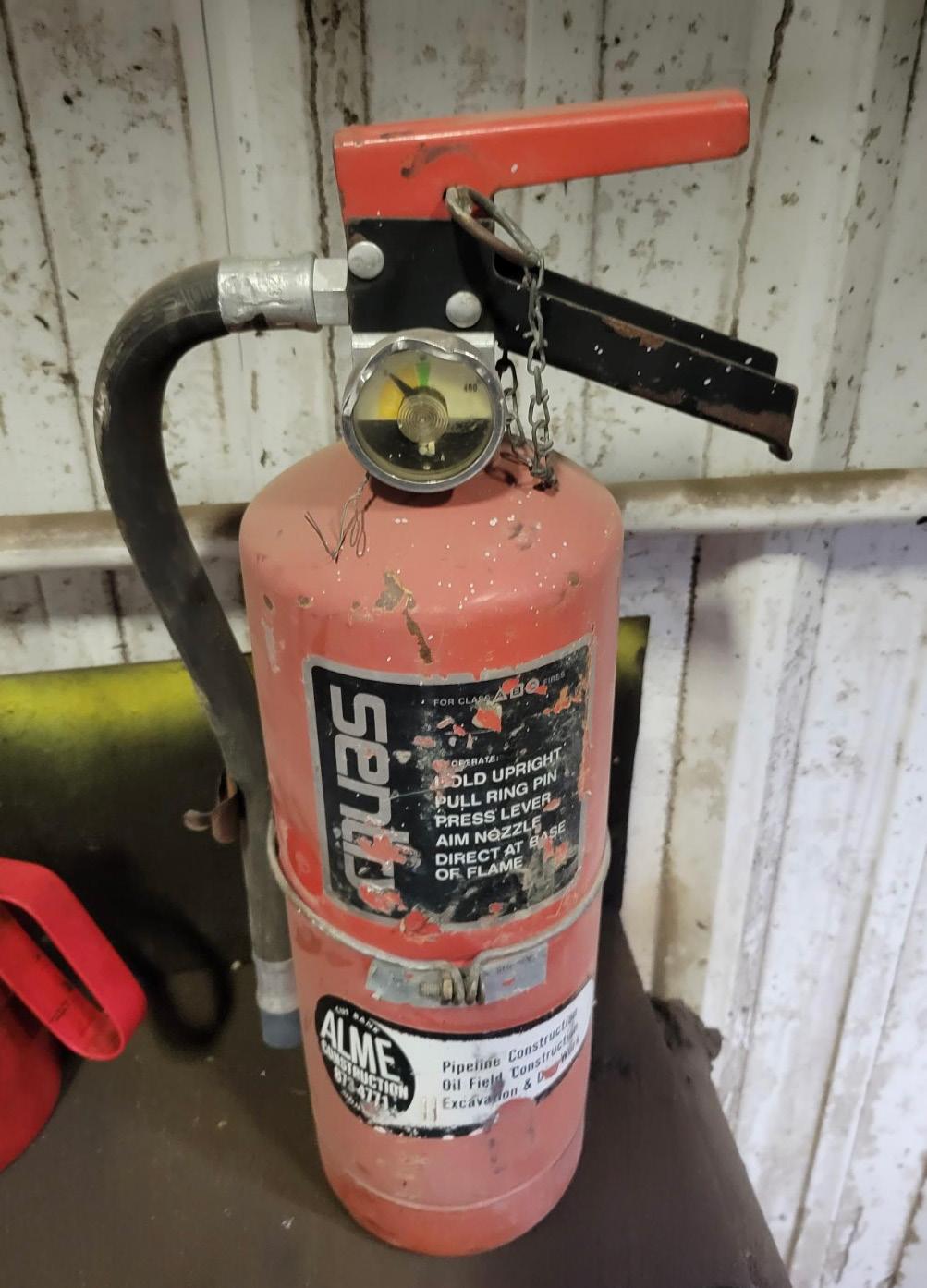
Mixing room violations
This paint mix room shows a couple violations: the plastic trash can needs to be a metal one with a closed metal lid, and the liquid solvent paint-waste container needs to be grounded and include a waste-paint label.
Out of the zone
This fire extinguisher is out of service, as evidenced by the arrow not in the green. It also needs to be mounted, not loose on a table. It is also missing a fire extinguisher sign above it and needs to be tagged by the servicing company to indicate when it was last serviced.
25 May 2024 fenderbender.com

“You could use an infrared camera to look for hotspots. You need to take an initial reading, and then wait 10 or 15 minutes and come back to take another one just to make sure the battery is not heating up. If it’s heating up, there’s a chance it could be going into
As Dwyer notes, that means damage to one cell of hundreds or thousands (depending on the design of the battery pack) ignites the damaged cell, and then ignition and fire continue to spread in adjacent cells in a sort -of domino effect.
“If you bring that into the shop and the car goes into thermal runaway, there’s a good chance the shop’s going to burn down. Someone’s going to get hurt. So you really need a good intake process to make sure [thermal runaway] is not happening.”
The company will tailor a written plan for EV safety, including personal protective equipment (PPE), and training for technicians and administrative staff.
“We try to make it so it’s not as technical for the admin people, to make it easy on them.”
The company has also been doing “EV Wednesdays” on LinkedIn for a little over a year, including topics such as job hazard assessments, hazard communication programs, and PPE requirements. Although some fear working on EVs, Dwyer said much of the fear is unfounded.
“There is a lot of hype around EVs, but the cars are built to be safe. If you just do what you’re supposed to, you’ll be fine. If you wear your PPE and you follow the repair process, there's nothing to it, you'll be fine. Once you deenergize the vehicle, it's just a regular vehicle. There's just so much hype behind electricity it freaks people out. I often talk to techs in the shop, who say, ‘I'm never gonna work on those. But, it's pretty simple. It's about a 20-minute de-energization process.”
Site Plan
A site plan, which serves as an emergency evacuation plan, is sometimes required by the fire marshal. But the company creates one for each of its customers, with copies of
it posted at all exit locations and in each department plus the break room or area. It’s also available on a mobile device.
“I’ve seen it happen where the shop manager will be outside with the fire department, and they can look at his phone for the site plan.”
Offering Peace-of-mind
“There are a lot of different ways with safety to keep the government off your back. But if something happens, you don’t need to worry about it. You can just give us a call, and we’ll come take care of it. We manage compliance for the shops. Shop owners have a lot that keeps them up at night, so that’s something we want to try to give them peace of mind so they don’t have to worry about so much.”
The company offers assistance with compliance for OSHA, EPA, and where applicable, the DOT.
“We’re boots on the ground; we’re in your shop working with you. Most of these other companies are just doing online training. We do offer online training, too, but a lot of the older technicians don’t like using computers. We do bilingual training in-person and online. We cover every state, and we are in Canada as well.”

26 May 2024 fenderbender.com
Managing compliance
A GMG Envirosafe compliance coordinator conducts a shop assessment.
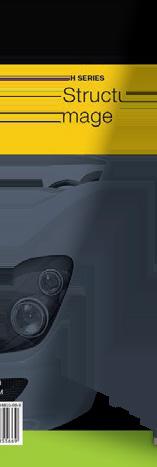
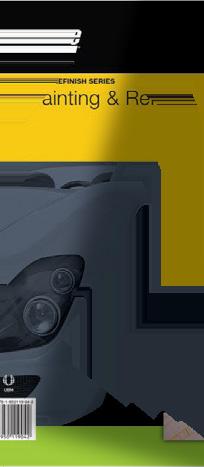


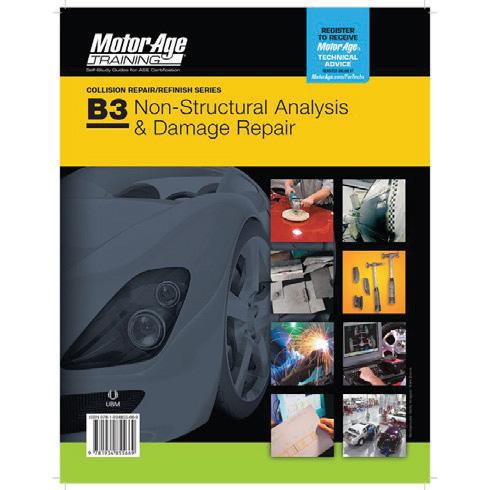









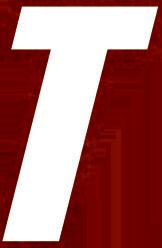
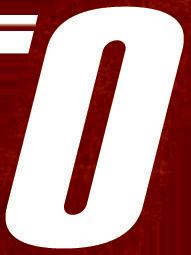
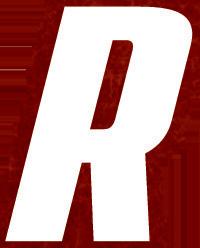
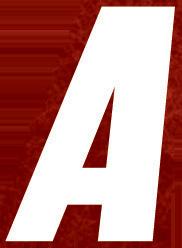



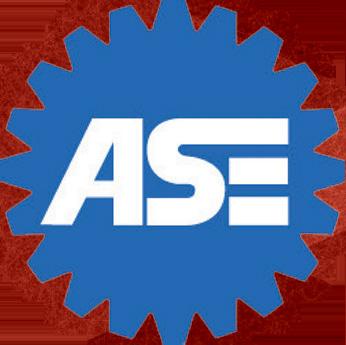
Motor Age Training offers the most complete and extensive collection of B-Series Collision Repair training guides available anywhere!





B2 - Paint & Refnishing Certifcation B3 - Non-Structural Analysis & Damage Repair B4 - Structural Analysis & Damage Repair B5 - Mechanical & Electrical Components Certifcation B6 - Damage Analysis & Estimating Certifcation *training guides available in a variety of formats PASSTHEASE.COM PREPARE FOR AND PASS YOUR ASE CERTIFICATION EXAM GUARANTEED! THANKS
TRAINING SUPPORTERS
TO OUR

Darryl Liechti’s shop is growing rapidly, thanks to his focus on customercentric, honest operations
By LINDSEY GAINER
28 May 2024 fenderbender.com PROFILE
MELANIE HEIGES/PHOTOGRAPHY BY MELANIE
DARRYL LIECHTI HAS A PROBLEM.
His shop — Collision Correction in Williamsburg, Virginia — has grown so fast that he will likely need to expand beyond his current 10,000 sq. ft. space in the next 18 to 24 months, only two years after taking the business full-time and establishing himself in his current location.
It’s certainly a good “problem” to have, concedes Liechti, who spent eight years building Collision Correction as a side job, fixing friends and family member’s cars out of storage units and rented garage space while working full-time for other shops. By 2022, he’d gotten so busy that it was time to make a decision: take Collision Correction to the next level, or scale back and continue with the safe, steady job he had, letting the dream of shop ownership die in the process.
As you may have guessed, he chose to take the leap into ownership…and he hasn’t looked back since.
Chasing the Dream
Liechti is the first to admit that the journey to owner/operator hasn’t been without its difficulties — there’s been plenty of moments of frustration and overwhelm, especially around the leasing and permitting needed to establish the current shop. But, like he always has, Liechti dug in and taught himself what he needed to know to make it happen.
When you hear his story, it’s obvious that this determination and perseverance runs deep, and it’s a big reason why he’s arrived where he is today.
After graduating from Universal Technical Institute’s collision repair program in Houston in 2005, Liechti moved back to Williamsburg and dove into work as a body man’s assistant, moving up to standalone tech three years later and team leader shortly after that. He seized every opportunity to learn about the business, even asking a previous manager to let him work in the front office when a workplace injury rendered him unable to work the floor, so he could see that side of operations firsthand.
By the time Collision Correction was born, Liechti had gained enough experience to know that he wanted to be an owner someday. Seeing struggles with the front offices and customer experiences at other shops really motivated him to want to open his own business, he says.
“I wanted the ability to control the customer experience from start to finish. You can do excellent work in the back, but if your customer has a poor experience, that reflects on the business as a whole.”
Customer-Centric Service
Liechti is incredibly proud of the fact that — first and foremost — Collision Correction is a “customer-centric” repair shop that always operates with honesty and integrity.
It certainly hasn’t happened by accident, though (no pun intended). Liechti has spent countless hours creating standardized processes that ensure every customer gets the same excellent experience day in and day out. Even before he opened his doors, he’d run scenarios with mock customers to hone the process and determine what could be done better.
“If you can find a way to mitigate with the customer, if you can be proactive instead of being reactive, they’re going to have an excellent experience, for sure.”
Communication is key, he says, as is being upfront and honest no matter how difficult the conversation. Empathy goes a long way, too. Liechti and his team never lose sight of the fact that accidents are traumatic events for customers, and they treat them as such.
He also makes it a priority to educate people about their repair and stay in touch throughout the process, often using automated text updates that both save his staff time and provide the customer with necessary information in a quick, efficient way.
“I would say a good 90% of our customers, if not more, prefer text messages. It’s a win-win — they don't really want to be burdened with a phone call, so they're able to see at a quick glance what’s happening, and everything is documented. It's an easy
reference point.”
Things like virtual estimates and contact-free service are additional ways he goes above and beyond to meet the needs of his customers. And the team strictly adheres to OEM procedures throughout the repair process, to ensure the car is fixed in a safe manner, he adds. The shop is I-CAR Gold Class-recognized, and all the technicians are individual Platinum-recognized on top of having multiple manufacturerspecific certifications.
Collision Correction isn’t part of any direct repair programs (DRPs), either, something Liechti says allows him to operate and repair vehicles as he sees fit without any outside interference.
“The customer is our customer, not the insurance company. We are a DRP-free shop. We do not have any insurance relationships; we’re strictly independent. Because of that, we’re able to provide a level of customer service and quality that, in my opinion, is unmatched in our area.”
It’s obvious his customers agree. Liechti has “never advertised a day in his life” — his entire business has been built through word-of-mouth referrals, a testament to the strong reputation he’s earned in the community.
“Honest and highly professional.”
“Darryl and his team are outstanding.”
“The absolute best.”
These are just a few of the ways customers describe the shop in their reviews.
“We love the customer service and community aspect,” he says. “Williamsburg is a very small, business-oriented town. Every chance that we have to get involved in a local program or give back, we absolutely jump at it.”
The shop recently partnered with GEICO and Enterprise Rent-A-Car, for example, to complete the repairs on a Transit van that will be used to pick up and deliver bikes to the less fortunate. And Liechti is interested in creating a program soon for local high school drivers to teach them what to do in the event of an accident.
Not only that, but the team also makes it
29 May 2024 fenderbender.com
a priority to invest in other area businesses — every Friday they all leave the shop for an hour and go have lunch at a non-chain establishment, something they’ve done together for years to bolster the local economy.
“We certainly appreciate our community and the love that they show us. We feel like it's our obligation to give back.”
More Than a Team, a Family
Liechti currently has a staff of eight: two collision techs, one painter, one shop helper, one CSR, one estimator/production manager, and himself and his wife, Cecile.
It’s clear that the camaraderie he shares with his team is a big reason for his success, and it’s something he never takes for granted.
“I'm very fortunate that all of the guys who work for me, we have been together for the last 15 years. We worked together at a few different shops on team-based systems.”
When it came time to take Collision Correction full time, Liechti couldn’t imagine doing it with anyone but his friends.
“I am forever grateful that they trusted the dream enough to come work with me and be the lifeblood of the business,” he says. “I'm very appreciative of the staff we have. We're a family; that's just what it boils down to.”
Liechti says he knows exactly what he’ll get from each of his teammates dayto-day, and them from him. The mutual trust and respect that exist ease his job as a manager, and knowing the strength of each technician means work flows through the shop seamlessly.
“Our technicians are true craftsmen who value continued training and new repair technologies. They’re 100% flat rate, so from a business standpoint, I know what work I can give this guy because he’s extremely efficient at it, and I know what this guy's extremely efficient at. They, in turn, make more money on a flatrate pay scale, and the shop is more productive.”
And speaking of family, Liechti calls Cecile his “rock” and the key to his success on a personal level. Not only does she handle the accounting and invoicing for the business, she’s also been Liechti’s number-one supporter from day one.
“Even back in the days when I was renting storage units to repair friends and family’s vehicles, she would bring me dinner or lunch while I was doing that, understanding the sacrifice of missing out on time with her, or date nights, or things that got canceled because of the work. She understood the dream and stood beside me every
step of the way to make it happen. I'm very blessed and thankful for my wife.”
Keeping the Focus on Quality Long Term
As of now, Liechti says he doesn’t have any ambitions to become a multi-shop operator — he wants to keep a tight rein on quality control and remain customer-centric. When he does grow, he wants to “add value to the team, as opposed to just bodies.”
He’s currently partnering with a local trade school — New Horizons — to provide an internship to one of their students. Liechti has learned a lot from mentors over the years, he says, and he wants to give back in the same way. He also hopes he’s training the next member of his staff in the process.
“It’s really the best situation for us, because of our tight-knit group and the quality that we all expect out of each other daily. Raising someone up in our system who understands those core values, the honesty and the integrity, is ideal.”
As for his advice for other shop owners?
“Stay focused, keep an open mind, research the industry, try to stay on top of industry trends and convey that information and knowledge to customers, and always stay customer-centric.”
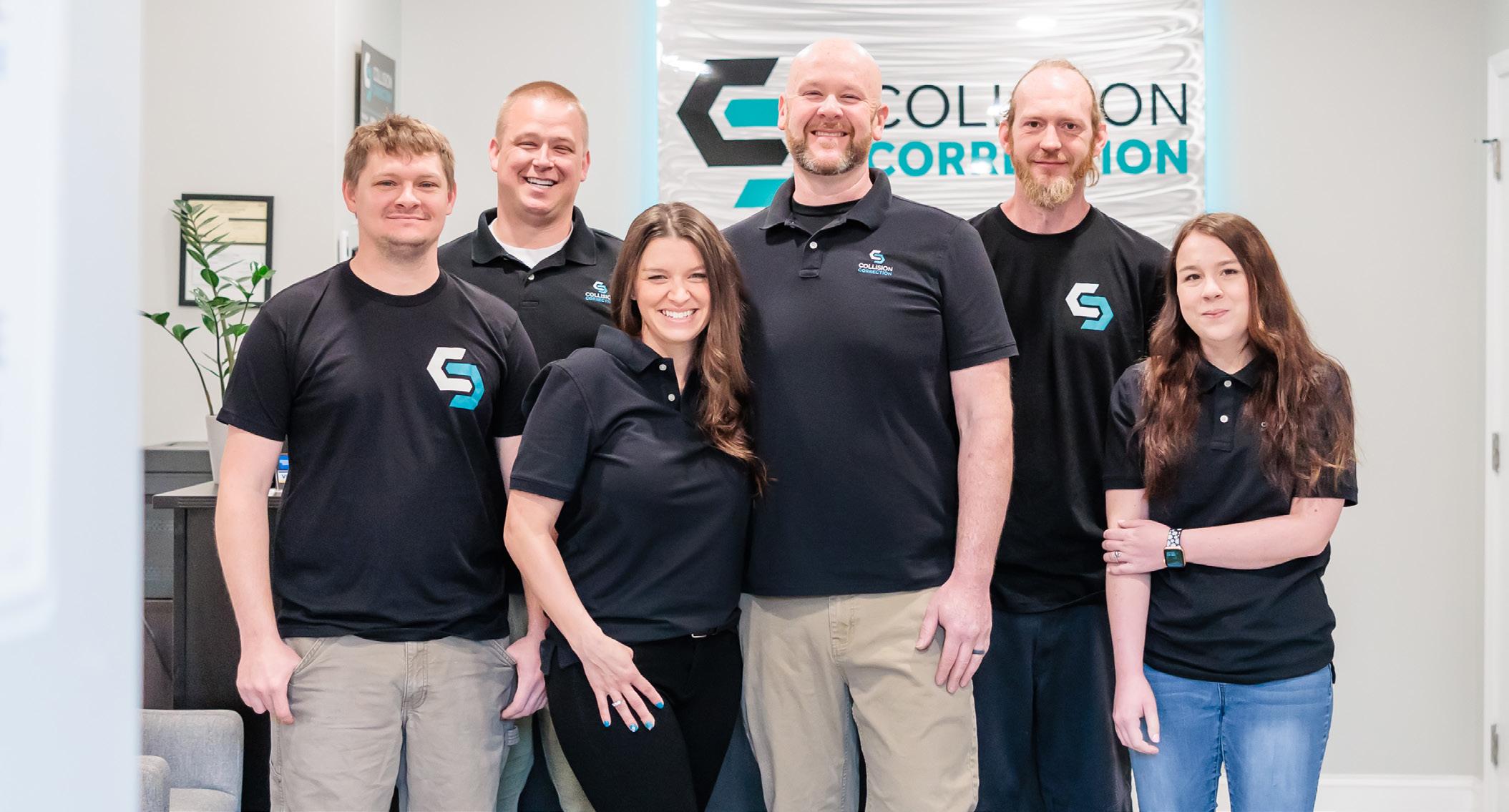
30 May 2024 fenderbender.com
PROFILE
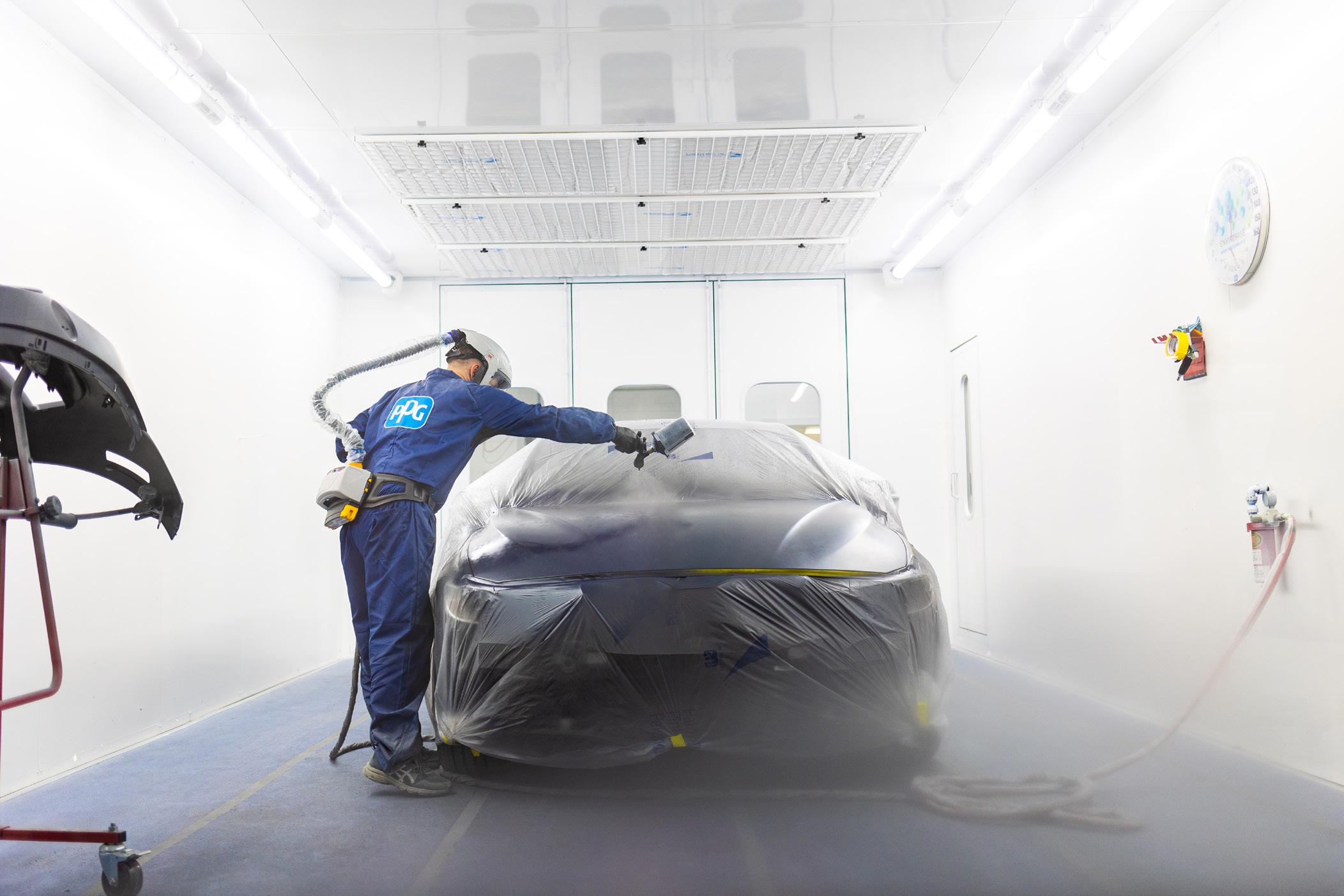
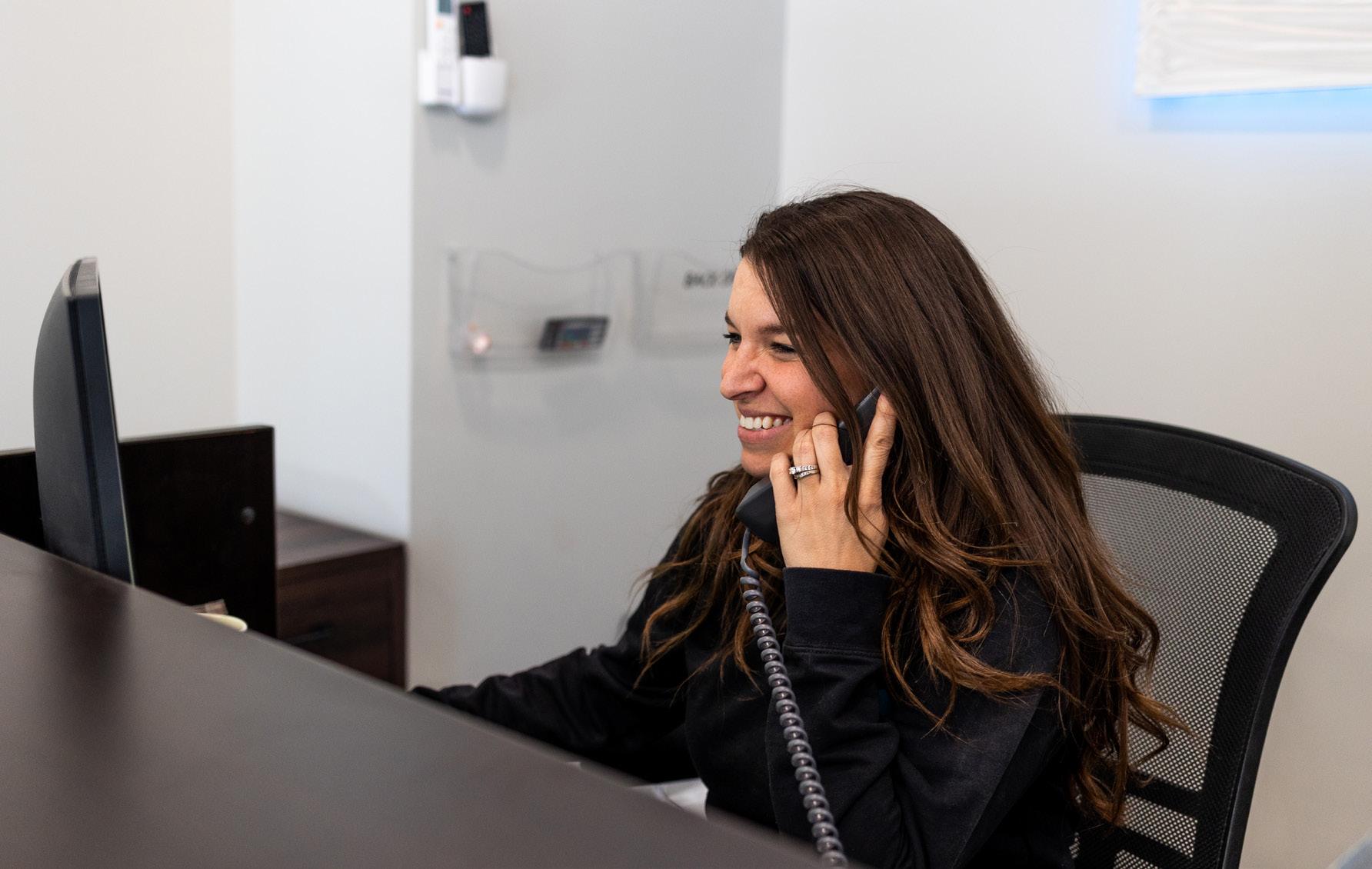
31 May 2024 fenderbender.com





















HOW TO LEVERAGE DIGITAL MARKETING
It can be the most effective tool to stay on top of your customer’s mind
YOU’VE PROBABLY HEARD the phrase “targeted digital marketing” before — but what does it mean? And how can it help keep your shop at the forefront of potential customers’ minds?
32 May 2024 fenderbender.com
STRATEGY THE SOP SIRAANAMWONG / ISTOCK / GETTY IMAGES PLUS
Targeted digital marketing is essentially a way to make sure that the people most likely to visit your shop see your ads online. People are “targeted” using data they’re putting out into the world — perhaps the wording they choose to perform a search, or the location they perform that search from. Google Adwords, for example, can be targeted to appear to people carrying out Google searches in certain geographic locations — near your shop, or even people in your competitor’s lobby — when they’re searching for certain keywords or phrases, things like “collision shop near me” or “collision shop in [your ZIP code or city].”
Instead of relying on someone remembering your shop from something they may have seen a long time ago — like an ad on TV or the radio — you’re actively meeting people in their moment of need, when they’re searching for your service.
For this reason, Megan Fulkerson, partner and digital strategist at 3P Marketing, believes targeted digital marketing is the most effective tool a collision shop owner can utilize to stay top-of-mind and bring new customers through the door.
Here’s why.
As told to LINDSEY GAINER
Precision Matters
The newest way we are utilizing data to keep a shop top-of-mind is by targeting specific brand owners. For instance, if a shop is certified to repair BMW, Honda and Nissan, we build out campaigns to target owners of those specific brands in a radius around the body shop. By only targeting brand owners, we can tailor the ads to reflect the type of vehicle they drive and inform them that your body shop is certified to repair their vehicle. We can then track if that person ever steps foot in a client’s shop by utilizing cell phone location data (this data is anonymous, so we can’t ever provide a name, only a ZIP code that someone came from).
We utilize software to build out the best possible campaign to ensure we are showing up online regardless of where a potential
customer may be – Googling, browsing online, using social media, streaming television, or visiting your website. Your website is the employee that is working 24 hours a day, seven days a week to keep your shop at the forefront of people’s minds.
Capitalize on Your Value-Adds
The most important things to highlight in your ads (or on your social media accounts) are your value propositions — what do you offer that sets you apart from the competition? Do you offer pick up or delivery, online estimates, a free detail with repair? Highlighting what will make the customer’s inconvenient situation a little easier goes a long way. Equally important is highlighting any brand-specific training your shop has. If a BMW owner learns that you are BMWcertified and why that is so important, it can help ensure you get the repair.
Staying active on social media channels — like Instagram, Facebook, X (formerly Twitter) and YouTube — is another important way to keep your shop top-of-mind with potential customers. It lets you show the world who you are, and why you can be trusted. It’s a great tool to highlight employees, give a “behind-thescenes” look into what’s going on in the shop, and showcase cool, fun or unique repairs.
Social media isn’t the best way to get new customers in the door — that’s the job of targeted digital ads…but it certainly can help you build brand awareness and develop a following of potential customers. Social media is also free — so for shops who may not have the budget right now for ads, it’s a great way to put your value-adds out into the world so people can get a feel for your offerings.
Having your customer service reps push customers to fill out a review is also a great thing to do, because many people will take reviews into account if they are unsure of which shop to go to.
There’s Still An (Important) Place for Community Involvement
Community involvement is not only a great way to support your neighbors and build awareness for your business; it’s also a great
team-bonding activity. During my time at Lefler Collision, we put a large emphasis on community involvement. We did everything from car care clinics for women, to “little lady” days for Girl Scouts, grilling hot dogs at the public pools on Saturdays, passing out water at races, and more! I always had our crew wearing a logoed t-shirt, and it was always fun to give back to the community. Working out in the community provides great content for social media as well and can also be an important factor when someone is looking at your organization as a potential employer.
Should You Manage Advertising In-House or Outsource?
While social media is best managed by someone within the shop, a professional within the marketing agency world is typically needed to place digital ads or streaming commercial spots.
Many tools are not available to the public and have large minimums, which is why it is necessary to use an agency. The biggest positive to using a marketing expert is that you get access to an entire team managing and optimizing the campaign for you, to ensure it’s targeted exactly as it needs to be.
Rome was not built in a day, however, and it’s important to keep that in mind when starting any type of advertising campaign. Utilize data to show what type of traction you are getting. If you do not have Google Analytics set up already, that is a great free tool to help see where traffic is coming from.
The Bottom Line
People are spending more time than ever online — on their phones, laptops, tablets, and other smart devices — and they’re utilizing search engines to find services in their moment of need. Ensuring they see an ad for your shop at that precise moment is the most effective way to bring new customers into your shop, and ensure you remain topof-mind with the people who need your services most. Utilizing social media channels and getting involved in your community will further compound your brand recognition and build a strong foundation upon which your digital marketing can stand.
33 May 2024 fenderbender.com LEARN | GROW | WORK SMARTER






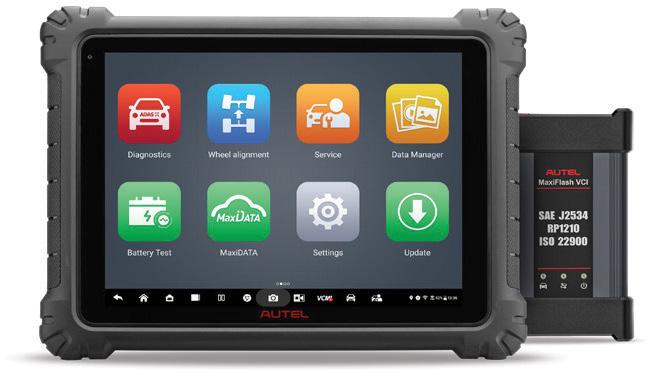

SHOP WORKFLOW IS PART PLANNING, PART PROCESS
A well-designed shop will only run as efficiently as the processes guiding it.
By TODD KORTEMEIER
IT’S IMPOSSIBLE TO consume any media these days without navigating a myriad of shoehorned-in Taylor Swift references, but please excuse one more: When it comes to laying out a collision repair shop, there’s no
35 May 2024 fenderbender.com
STRATEGY
FINANCE+OPERATIONS PHOTOS: RUDZHAN NAGIEV / ISTOCK / GETTY IMAGES PLUS
































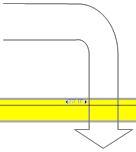























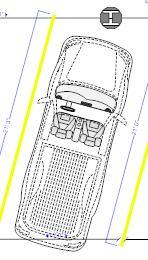

better starting point than a “blank space.”
But blank spaces have a way of filling up swiftly (sorry). It may seem like that wideopen 20,000-square-foot floor will fit everything your shop needs and then some. But once you start placing equipment, it can be easy to forget things, and suddenly, that wide-open floor isn’t so open.
“A lot of times, initial layouts and drawings are done, and the idea for workflow doesn’t necessarily match how they actually do it with their particular people and skill sets,” says Lance Getz, co-owner of Quincy Auto Supply, a PPG Platinum Distributor and auto parts store in Quincy, Illinois, and who was a PPG territory manager and later business development manager from 2004 to 2017. “… So how you do it and how you lay it out also really is impacted by what your team of people looks like, and your skill sets, and your ability to hire people for that.”
How you choose to physically lay out a shop is important, but so, too, is the process that moves cars through that layout.
People and process
Shops build new spaces or renovate existing ones for a reason. Something about the old space wasn’t working. And if the space wasn’t working, it’s also the perfect opportunity to look at all aspects of how you do business.
“Sometimes, when moving to a new shop, it’s a good time to change the ‘how we do it here,’” says Getz. “Because there’s lots of ways to do it.”
A shop’s layout and its repair process go hand in hand, says John Shoemaker, business development manager for BASF.
“If you don’t disassemble vehicles right, create a strong repair plan at the beginning, your layout, your floor plan, production processes aren’t going to matter,” he says. “Because those cars could be going back and forth.”












Shoemaker says that one of the trends in shop design is having more spaces dedicated to certain tasks. With cars having more specialized repair needs these days, it can be more efficient to have a dedicated space with a corresponding, specially trained, technician. One example is disassembly, where Shoemaker has seen shops appoint a specific teardown technician and a damage appraiser working in that station all day. When Shoemaker sets up a shop, he pushes for a blueprinting space with a two-post lift and measuring system, and from there if the car needs alignment it can go to Structural, then from Structural to Body, if need be, or to Reassembly. Cars are always moving forward in the process, not back and forth.
“It’s a definite, absolute culture change to move like that, because they’re so used to walking out and handing somebody a repair order and say, ‘Fix the car,’ Shoemaker says. “And we just can’t do that
36 May 2024 fenderbender.com 202' 4" 12' 12' 13' 8" 10' 0" 8" 1' 8" 20' 0" 20' 0" 20' 0" 19' 11" 20' 0" 20' 0" 20' 0" 20' 0" 20' 0" Back Parking Entrance 12' Door 0 Loading Dock Loading Dock Elevation Employee Bathroom Compressor (No Measurement 20' 0" 20' 6" 20' 0" Booth: 27.5 x 14 Mix Room: 12 x 9 Masking Cool Down / Buffing Clean Up/ Detail Booth: 27.5 x 14 Air Exchanger 3' 0" Sanding Parts Break Room 12 x 16 Truck Bench 7 35 Drain Inside Estimating Stall 17' 8" 1 Equipment Storage Paint Stands & Racks Paint Material Storage Waiting for Approval Holding STRATEGY



























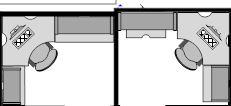








have angled stalls along an inside lane to the left. The cars then took up the space normally blocked by the columns, leaving a clear lane for movement.
As with the aforementioned retention pond, unexpected things come up when building a shop. Some creativity might be required. If the available square footage is a concern, Shoemaker has seen shops opt to build upward.
Any kind of hose or cord on the ground blocks a path for a parts cart to get through. So, Getz advises to consider getting those sorts of things off the ground if possible. That’s the sort of improvement that can only be easily made when building out a new space.
anymore. There’s too many specific systems on cars. And somebody needs to be trained on the structural aspects of the vehicle to complete those repairs.”
Planning for movement
A common shop layout, and one that Shoemaker favors, is the “racetrack” style, in which cars move on a loop within and ultimately out of a shop at the end of the process. But not all shops have an easy-in, easy-out path in and out of the building. Shoemaker cited an example of a shop that was mandated to have a retention pond and could only bring in cars one way. That shop ended up using a J-shaped layout in which cars go in and eventually double back to go out.
Getz recalls a shop that had plenty of space, but many support columns that made it difficult to make any 90-degree turns with cars. So, the solution was to
Adding a mezzanine, say for the everincreasing need for parts storage, can be a more cost-effective option than you might expect, says Shoemaker. It wouldn’t even require a freight elevator; Shoemaker has seen shops install a conventional wheelchair elevator. They’re big enough to fit a parts cart, can move 500-600 pounds, and require a lot less of an investment and engineering to install.
“You can put the employee break room, and maybe the tool room up on a mezzanine,” says Shoemaker. “Then you would have all this additional square footage … and still keep all your body work functions down on the main floor.”
Remember the essentials
Unless there is unlimited time, space, and money, compromises must be made in any building project. That’s why it’s vital to know your shop’s need-to-haves and how they fit in. There are some things that can’t easily be moved later -- think electricity and air hookups.
“Really get down to, OK, where are we going to have a water spigot? Where are we going to have this electrical outlet, for 220, for the resistance spot welder,” says Getz. “And when the car leaves here, how do we make sure we don’t have a car in its way?”
It is perhaps easy to focus on the big picture with shop design: making space for cars and planning how they move across the floor. But there are all sorts of things that also need space in a shop, and not just heavy equipment. It may seem simple, but even the location of a trash can should be considered, just like anything else employees are going to need regular access to.
“Knowing where we are going to have that, so if it’s something we use every day it needs to be within that side of the shop or within the shop,” says Getz. “If it’s something we use once every week, it needs to be stored maybe in a tool storage area. That’s not too hard to get that machine or a piece of equipment to the car. And then if it’s something we only use monthly, maybe we put it into an exterior storage shed or storage container or something so we can get to it.”
Above all, a shop’s space needs to be used in the most efficient manner possible. That starts with a good process, executed by well-trained technicians.
“When you have everything you need to fix that vehicle, that comes into the shop one time and it leaves,” Shoemaker says. “And that’s what maximizes your space; the more you move cars in and out, it just doesn’t matter how well you’ve defined your space, because people are going to misuse that space.”
37 May 2024 fenderbender.com 0 4" 4" 12' 0" 12' 4" Water Elect. Bathroom Drain Employee Bathroom 1223 North Price Road, Olivette , MO Parts Office Delivery Showroom
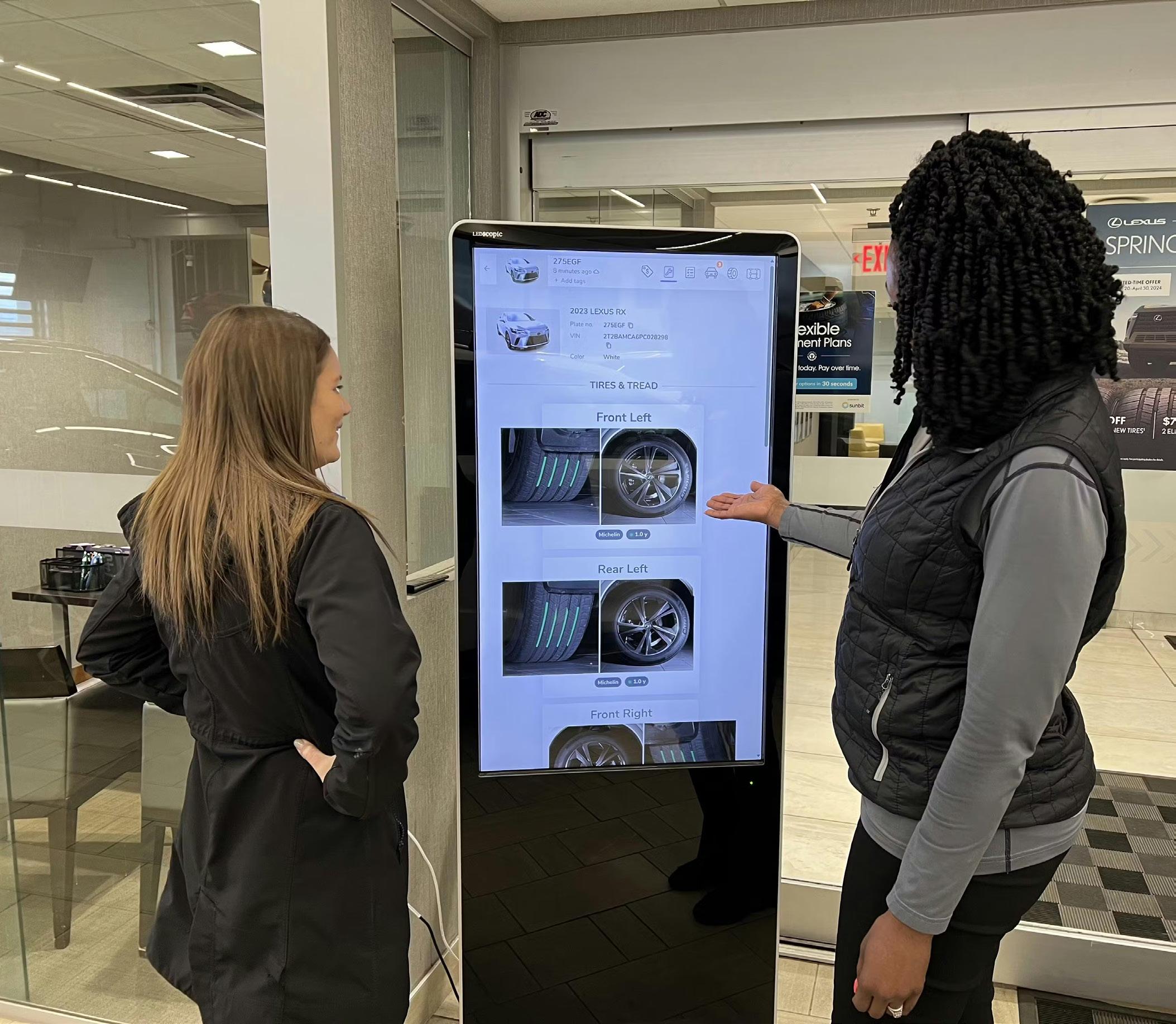
A LOOK AT THE FUTURE OF VEHICLE INTAKE
UVeye is a ‘drive-through MRI system’ for vehicles. One shop director says it’s revolutionized his shops
By NOAH BROWN
SEEMINGLY OVERNIGHT, AI has become the topic of conversation in every industry. Companies, regardless of what their services or products are, are trying to shoehorn artificial intelligence in their marketing wherever they can.
It seems surprising, then, when a product actually properly uses AI and can provide a product that helps its customers. William Demaree, group director of fixed operations of the Tom Wood Group of automotive dealerships, says UVeye has been that tool for his shops.
UVeye is a “drive-through MRI” system. Using an array of cameras and sensors on an arch scaffolding, the system scans a vehicle as it drives through. In a matter of seconds with the help of AI-based software, shops can have a full readout of a vehicle with thousands of images cataloguing every dent, scratch and leak.
38 May 2024 fenderbender.com CASE STUDY STRATEGY COURTESY OF TOM WOOD GROUP
A powerful tool, it can help shops revolutionize their operations if used properly, Demaree says.
The Problem
We all seem to need more time. No matter how efficient we can make our day-to-day processes, there always seem to be new tasks that come in and fill up that newly freed time.
In addition, it’s becoming more difficult than ever to make sure that vehicles are repaired safely and completely. With increased reliance on electronics such as cameras and sensors, even a minor fender bender can be dangerous if those components aren’t tested and restored to working order.
“We do a consultation with our guests and blueprint every vehicle. That might take three weeks by the time you make the call and schedule the appointment for the consultation,” Demaree says. “What we’ve seen is some of these cars aren’t safe to drive because they may have run over something and have no idea that the undercarriage of the car is damaged. We have seen cars that have been scheduled for three weeks drive through that have core support damage that nobody even knew about.”
The Solution
Though it’s not a one-stop solution, Demaree says UVeye has been a revolutionary tool in his shops that has helped provide customers peace of mind if they’re not able to get their vehicle in for a consultation right away after an accident.
“The consultation may be in three weeks, but we encourage you to come by for a safety scan and go ahead and drive through our system just so we can make sure that the car is safe to drive over the next couple of weeks,”
he says. “That’s been a huge hit and I think it lifts the weight off the customer, all just by driving through the UVeye system.”
The UVeye system uses AI to help it recognize a problem area on a vehicle and learn what to point out in its scans. Demaree says the UVeye team is constantly updating the software that the system uses and pushes out updates regularly.
In the early days, the system had some blind spots, but through the help of shops using the system, the UVeye team has since been able to improve the accuracy and efficiency.
“When we first put it in there were some struggles, but we have weekly calls with their team and identify things that it’s missing,” Demaree says. “They do software pushes on this thing weekly, so usually as we’re identifying problems, they’re fixing them and pushing it into our systems. They get corrected pretty fast. It’s really pretty dialed in.”
Demaree says, in addition to helping expedite the consultation process, the UVeye can also provide peace of mind and defense against false allegations of damage by one’s team.
Demaree describes a situation that recently happened in one of his shops. A Porsche came in and had a scratch on the hood and a small scuff on the front bumper. The customer accused Demaree’s team of causing those. But, because of the UVeye scan, Demaree and his team had extensive images and records from when the vehicle was dropped off, and both flaws were clearly visible in those images.
“That’s a $12,000 issue that we would’ve had to deal with had it not been for UVeye,” he says. “We take pictures, we do the walk arounds, but sometimes the iPad’s quality is low or sometimes the angle isn’t right. The UVeye eliminates that.”
The Aftermath
The UVeye is a powerful scan tool that can help detect hard-to-notice body damage and other flaws, and the AI-based software is constantly evolving. However, as is the case with essentially all AI-based technologies, the UVeye is still a work in progress.
The team is constantly working with shops to find weak points in the software’s detection capabilities and upgrade the system. In the time that Demaree’s shops have used UVeye, there have been several instances in which techs have caught errors that the system has missed. For instance, Demaree said for a while the UVeye struggled to maneuver large offroad tires. It also can’t fully diagnose if electronic components aren’t working.
“It’ll pick up anything that’s misaligned, but it won’t pick up if a sensor is not working. Not yet, at least,” Demaree says. “They’re working on some technology for that, but right now it can pick up if there is something that is going on in the vicinity to the sensor.”
Any shop that decides to invest in a UVeye system, Demaree says, needs to understand that it’s a collaborative experience. He’s on weekly calls with the team working through issues and trying to figure out potential solutions.
“They’ve come a long way on the product,” he says. “The support team is outstanding.”
The Takeaway
The UVeye vehicle MRI system, Demaree says, is a fantastic tool for a tech-forward shop. It can help provide insurance against customer accusations, and it can help overhaul a shop’s intake and diagnostic process.
“It’s up front with our customers and is so transparent that it just... it is what it is,” Demaree says. “It doesn’t lie – it just shows you the facts of what’s going on with your vehicles.”
39 May 2024 fenderbender.com
HOPE IS NOT A STRATEGY
How to Implement a quality assurance process
By STEVE TRAPP TECH+TOOLS
IN THIS ARTICLE, we will explore some ways to apply lean principles to refine your quality assurance processes. These quality assurance processes enable a review of each process in the repair cycle to assure it is done to the proper standard, and is reviewed against this standard, prior to moving to a downstream process. The end goal is the repair center ultimately delivers a repair in the “same shape and form” as the OEM standard and the customer experience is legendary.
QC Checklists Aren’t the Only Answer
Most repairers establish “quality control” forms and hope that the product of the repair and repair experience can pass their “QC checklist.” Having a form has proven somewhat useful, as it forces everyone in the repair process to verify quality against a checklist the shop may have gotten at a seminar or online, and not an agreed upon standard. Unfortunately, you hope the repair quality (and repair experience) passes the QC checklist, achieves high CSI, and generates a solid NPS score. But in a lean practitioner’s mind, “Hope is not a strategy.” The rest of this article lays out a possible strategy.
Quality Assurance Instead
Lean practitioners instead implement a more involved “quality assurance” system to implement the building blocks of quality into a repair process. They generally start with a quality statement. The quality statement we created while at ABRA Auto Body and Glass was “Right the first time, on time.” That statement implied that fixing it right the first time was a higher priority than speed, profit or any other measure.
Fundamental to quality assurance is information.
Information on the estimate to prove all the parts and repair procedures are documented. Information from the OEM equipment manufacturer on how they recommend completing the repair. Information from ICAR and industry training sources on how to properly complete a repair. Information from the tool, equipment, and suppliers of consumables on how to best use their products performing the repair. And information on the customer’s needs and wants to assure you are delivering an experience which reflects their concerns and what they value.
Technician Advisory Groups Craft Quality Standards
With many organizations I have been a part of managing or have consulted with, we have formed a technician advisory group which meets periodically and crafted a set of interdepartmental standards which delivered on this promise. We use a flip chart and define these with Post-it notes to allow us to reposition the statements as they evolve. We always have someone from the downstream departments in the discussion, as they see the workmanship and the challenges they face and share them to craft the best standard. These standards were called quality standards, and they define the five to eight most critical things to assure were complete, PRIOR to moving a vehicle, file, or customer experience through the process.
Here is an example quality standard from body to paint:
1. Frame repairs specifications before and after are in the working RO file.
2. Mechanical systems have been, at minimum, diagnosed and (if possible) repaired prior to completion of the body repair process, so parts or unknowns don’t cause delays.
3. All welds have been finished off and caulking and seam-sealing of the vehicle and parts have been completed.
4. The inside of all installed panels has been painted on both sides and gaps verified and lights and attached emblems pre-fitted to avoid work after paint.
5. As much of the reassembly has been done as possible to enable final reassembly in two hours or less.
6. Filler has been cured with a GFS REVO (or similar drying device) to fully crosslink filler prior to primer.
7. “Primer-ready”: All body work is finished in 320 grit with a 3-6” featheredge, and the surface is ready to be primed.
“Primer-ready”: All body work is finished in 320 grit with a 3-6” featheredge, and the surface is ready to be primed.
So, if the technician helped craft these standards and new hires are trained on them up front, they work during the repair to ASSURE they are completed prior to passing to the downstream department. The concept of “primer-ready” came from a technician in Madison, Wisconsin, who said, “The reason I don’t worry too much about the final sanding standard is because a prepper always uses the DA on the repaired surface prior to paint, and they may take off more material. If you want it “primer-ready,” trust what we do and prime it!” This was a game-changer for the shop.
Another technician, after hearing about the new primer-ready standard, said, “But, we aren’t getting paid for that.” It turns out that is NOT true, as the paint times are for a new undamaged panel. There is no time in the crash guide for block and prime in paint times. Therefore, the body times (judgment times) for repair have time allocated to the body tech to make the repair in the same shape and form as a new, undamaged OEM panel. Asking body techs to get a surface primer-ready is actually one part of completing the body repair.
40 May 2024 fenderbender.com STRATEGY
Shops have chosen to have the paint team apply primer and block it to prep for paint without compensation. They do it, as the final blocking is similar to checking the OEM panel for imperfections prior to painting both sides.
Once we agreed to this standard, there were far fewer discussions about body repair quality and unknowns.
And then, Work Standards Next, the technician advisory group was asked to define the work standards or standard work to ensure these quality standards are achieved 100% of the time. The focus on these standards is what are the steps or work standards which are “critical to quality” to achieve the quality output desired. These step-by-step instructions are high level, and they detail the key steps to achieve these standards. Here again, we limit the number of steps to 10-15 to avoid overcomplication.
Example Work Standard for checking in a vehicle:
1. Greet customer by name (if possible), based on daily incoming vehicle schedule.
2. Ask for and tag their key (have the tag pre-filled out in advance).
3. Ask them to review the payment policy and sign the work authorization.
4. If not onsite, call, text or email the rental agency to assure they arrive promptly.
5. Ask them to go to the vehicle to “review what we are repairing” and point at the major components you will be repairing.
6. Take a final opportunity to sell them on repairing the things that will add value to their vehicle (often referred to as upsells) “while you’re here.”
7. Provide a brief explanation of the repair process and reinforce the fact that you will call them later that day once you have fully disassembled the vehicle and written and accurate plan of the repairs we will be performing. At that time, we can estimate the expected delivery date.
8. Ask them how they would like to be
communicated with during the repair process – text, email, or phone call?
Generally, we do this before 10 a.m. Is that a convenient time for them?
9. Thank them and pull the vehicle in the pending pre-wash / pre-scan area.
Work Instructions prevent too much detail in Work Standards
The detailed steps on how to use a tool, or how to perform a task, are saved for “work instructions,” and those are posted at the point of use, or available on the cart near the supply (or made available online like the 3Mcollision.com site).
As new pieces of equipment or tools are purchased, ask the supplier to provide these work instructions on use and maintenance, so they can be referred to for new hires or reviewed (if necessary) by the technicians using them.
These quality standards can be refined to use a Disney University process where you show a “good-show” and “poor-show” view. In a Disney theme park, they use visual management to show the difference between dressing in the Disney costume correctly versus incorrectly (long beard, tattoo showing, or other concerns). So, if it adds value, showing images of the standards when they are formalized can be quite valuable.
These standards often are posted on the shop floor on the original flip chart you used when they were created. This allows reviews during the first couple weeks after they are established AND when a quality control failure occurs to see where in the work standard, we didn’t follow the process or what they didn’t verify when reviewing the quality standard before moving the vehicle up stream.
Periodically, a “Spot Kaizen” or continuous improvement discussion happens at that moment and a standard need to be improved to prevent the quality issue in the future. These quality errors should also be logged in a continuous improvement log to reinforce the frequency and need for training on the work standard or reinforce the thoroughness of their final quality control inspections.
Forming the Habit of Following the Standards
If these processes are put in place, and reinforced for sufficient time to become a habit, then the need for a manager to inspect for quality assurance between departments. Remind the team you expect “perfection” and want them to pause and review their work PRIOR to moving it outside or to the downstream function. It is crucial that you make the downstream department aware of these quality standards so they can doublecheck as necessary. The company culture needs to be cultivated so that if they see something that is missed, they can reject the repair and send it back to the downstream department to “get it right” without being ostracized for pointing out things that are not right.
Final Quality Inspection
Finally, an important quality control inspection needs to happen prior to delivery, this one by the estimator or customer advisor. They listened to the customer’s wants and needs, so they need to verify the repair and repair experience meet their expectations. In short, in Toyota’s words, we trust our interdepartmental quality checks, but we “never let the end customer be the final quality control.” We strongly reinforce this to avoid rework or adjustments later that would cause CSI/NPS concerns.
In summary, establishing a quality assurance system is founded on getting technician/staff input on setting the quality standards for work to transition between departments, then work standards which are critical to quality are refined to assure the necessary steps are taken. Then, these standards are put in place and reinforced until they become a habit and then we trust the staff to become the quality inspector of their own work prior to movement up stream. Then, finally, get the estimator to perform the final inspection to verify quality is assured!
41 May 2024 fenderbender.com
Maintaining Vehicle Security in an Increasingly Connected World
Are your customers’ vehicles vulnerable to being held for ransom?
With vehicles becoming increasingly connected, there is now a major risk for vehicles to be hacked and ransomed to get the vehicle unlocked. Recently, I sat down with Jesus Vicente from Castile Security to learn a bit more about cybersecurity and how it could affect my shop.
I know we have all heard of cybersecurity, but I do not think a lot of us really understand it. We hear about companies getting hacked and losing all their data. But how does that pertain to a body shop, where most of our data is cloud-based? There is a large risk to our connected vehicles. How many of us do a pre- and post-scan where we are on a tablet that is Wi-Fi-connected and we are plugged into a vehicle? Hopefully, all of us, but the moment we plug into a vehicle and access it with our Wi-Fi, we have now put that vehicle at risk.
So, how do hackers get into our system if we are on a closed network and we have some type of security on our computers? Mr. Vicente told me it’s easy because our computers are not our only access points into our network. Any device in your business, including Wi-Fi printers, tablets and even employees’ phones that are connected to the network’s Wi-Fi are an access point for hackers to get into your network. If an employee opens an email from his personal email account on his phone and it happens to have phishing or ransomware software embedded in it, the hacker can now go from your employee’s phone and make a lateral move to other devices on your closed network.
Once the hacker makes a lateral move onto other devices on your network, they may embed keyloggers on your computers phishing for credentials to access highly sensitive sites like company bank accounts and accounting software. They may also move laterally into your tablet you use to scan vehicles and then access those vehicles and lock them down and ransom them. I don’t know about you, but a hacker having access to my company bank accounts or the ability to ransom a vehicle sounds like a very bad day at the shop.
Also, have you ever considered if your business insurance protects you against a cyber-attack? Most business owners’ policies have a cyber liability and data breach endorsement built into the policy. But what does it cover, and does it cover enough to indemnify your loss? Most cyber liability endorsements will cover costs for notifying customers about a data breach, providing credit monitoring services, assisting with any associated legal expenses, restoring and recreating data, restoring a computer system to its pre-attack level, lost business and extra expenses. You want to make sure what the limitations are, because a lot of policies will come with a very low preset policy limit for these types of losses.
The next thing I asked Mr. Vicente was, “How do I protect my shop? Because all of this feels very overwhelming, and I don’t even know where to start.” He said at the least, all businesses need these four safety measures.
Inventory of IP Addresses on your Network
You need to know this so you know where there could be vulnerabilities and easy access points into your network.
Edge Security
You need a firewall, at minimum. Or if you can afford it, a firewall combined with an IPA. He said think about security in terms of the TSA at the airport. When you go through TSA, they scan your driver’s license and boarding pass and verify you are allowed into the airport. That is what a firewall does for your business. The firewall secures your network and vets what is allowed onto it. You can set up defined rules for the firewall, like blocking traffic outside of the United States or allowing access to sites that are outside of the U.S.
Endpoint Security
After you have your license and boarding pass scanned at TSA and you are let in, they then scan your luggage to make sure you are not bringing anything in that could cause harm. That is what endpoint security is. It is software like McAfee or Norton, antivirus software that scans for malicious items like phishing emails, keyloggers, and more. Its goal is to catch any malicious activity that gets through your firewall and then keep it from spreading to other devices on your network, like your scanners that hook up to the vehicles.
Account Management
Multi-factor authentication should be set up on all devices and for any site you have to log into. Use a strong password generator to create secure passwords for the sites you log into. No one can remember all their passwords, so it is best practice to pay for a password manager that has built-in security. Never store all your passwords on your computer with a file name like “Passwords” or “Logins,” as that is prime picking for a hacker.
Mr. Vicente’s final advice was to pay someone to set your shop up correctly with an intrusion prevention system, which is what we have been discussing here. Also, have someone manage and review the system you set up to make sure it is operating correctly, even if it is just once a year you still need to have it reviewed.
Ultimately, it is up to us as shop owners and managers to protect our businesses and customers. Cyber threats are a real thing, especially with the amount of technology now going into vehicles.


42 May 2024 fenderbender.com JOE GRETO
COLUMNS COLLISION COURSE EMAIL: tiffanykaymenefee@gmail.com ARCHIVE: fenderbender.com/menefee TIFFANY MENEFEE has more than 20 years experience in the insurance business and now runs a collision repair shop in El Paso, Texas.
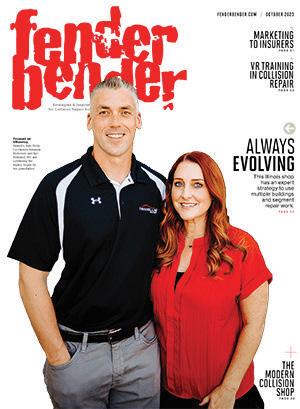
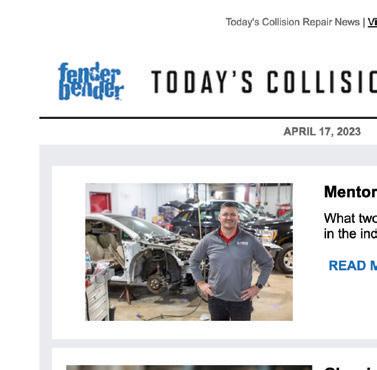

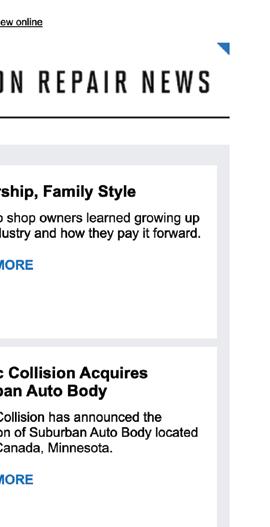
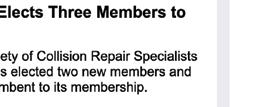











































































































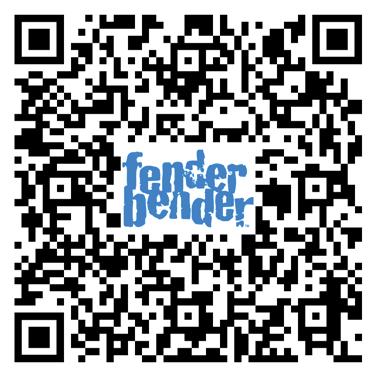

INFORMATION AT YOUR FINGERTIPS UP-TO-DATE INDUSTRY NEWS AND EVENTS, NEW PRODUCT LAUNCHES AND MORE! https://www.fenderbender.com/subscribe Scan to sign up for FenderBender Enewsletters Scan for a FREE subscription to FenderBender Magazine
The Collision Repair Conundrum: Retaining Talent in a Private Equity Era
Large MSO money creates a high risk of
The collision repair industry is witnessing an exponential growth of private equity (PE) interest, with no signs of this trend abating. Large multi-shop operators (MSOs) now stretch beyond traditional collision repair services, moving into auto mechanics and advanced driver assistance systems (ADAS). Amidst this shifting business landscape, we should be bracing for impact.
Private Equity's Impact on the Collision Repair Industry
PE's recent romance with the collision industry has drastically increased our competition and changed the game for smaller operators. These firms, known for their substantial investment pools, have increasingly bundled smaller companies into sizeable MSO conglomerates.
Why do we care?
Retention, that's why.
In a rink that is acquisition-rich, the capital is distributed under a different set of rules. Job-to-job profitability suddenly becomes an afterthought, and all eyes tend to be driven toward acquiring the next big deal. Therefore, the budget to keep the current locations staffed is higher because if they can't move the work through the stores, it simply bogs down the acquisition rate of the next purchase. Then, as smaller shop owners, we struggle to reimburse our team members for all they're worth while still turning a profit, and these MSOs sit lurking. Here are strategies to cultivate loyalty.
Balancing Recruitment, Retention, and Training
In an era where "Loyalty isn't the only card to hold," as shop owners we must emphasize refining recruitment, retention, and training protocols. Traditional loyalty faces a serious threat from the lure of private equity's deep pockets.
It's essential to assess and redistribute budgets to boost benefits packages, sending a clear message to your team that their services and loyalty are both recognized and rewarded.
The Visibility of Value and Benefits
Talk is cheap. Today, transparency remains more critical than ever in fostering a loyal workforce. Clearly outline the benefits your shop provides, ensuring every employee knows their total compensation package. This should include companyprovided lunches, vehicles, gas, shorter work weeks,
agreeable holiday scheduling, and training/personal development investments. These outlines must include credentials and timelines and clearly communicate the capital investment your store will be investing in the long term. Understanding what's at stake can squarely place your shop as an employer of choice, outweighing short-term monetary gains from elsewhere. Without it, this PE money creates a high risk of converting some of our most loyal folks simply because they generally play in a totally different sandbox. Therefore, in many cases, the capacity they can offer doesn't always have to pencil the same way we would need it to.
Preparing for the New Generation's Expectations
Today's employment landscape is often blindsided by a workforce unfamiliar with traditional protocols, such as a two-week notice before departure. Recent statistics have exposed that today's generation doesn't understand what a two-week notice is. This reality check calls for proactivity; back in the day, we received a notice, performed an exit interview, and saw an ex-team member off to a brighter future. Critical information was gathered at the end of employment to influence best practices moving forward.
Not today.
Today, you get no-call no-shows from team members who have potentially spent years working for you. Today, you get told on Friday that "today will be my last day." What's causing such random acts of jumping ship? It’s the deep pockets of PE money offering salaries and rates so aggressive that even owners might consider making the move. Are you prepared?
Conclusion
The collision repair industry stands at a crossroads where attracting private equity backing lifts the competition bar while simultaneously increasing the complexity of sustaining a dedicated team. Shop owners must not only grasp but prepare to adapt to these changes to thrive.
Adapting to the PE effect isn't required immediately. Still, by emphasizing training, compensation transparency, and open dialogue with your teams about their critical role in your business's future, you can chart a course through these stormy waters.
Above all, stay informed, stay flexible, and keep your team at the core of your strategy to ensure that as the industry landscape evolves, your business does more than cope — it flourishes.

44 May 2024 fenderbender.com COLUMNS DUE PROCESS
converting even our
loyal staff STEVEN PARKS EMAIL: drew@orlandocollision.com ARCHIVE: fenderbender.com/bryant DREW BRYANT has been the owner of DB Orlando Collision since August of 2011. A 20 Group leader, in-demand conference speaker and award-winning shop owner, Bryant takes a non-traditional approach to process implementation, lean process development, & overall operational experience while remaining dedicated to his staff’s personal and professional development.
most
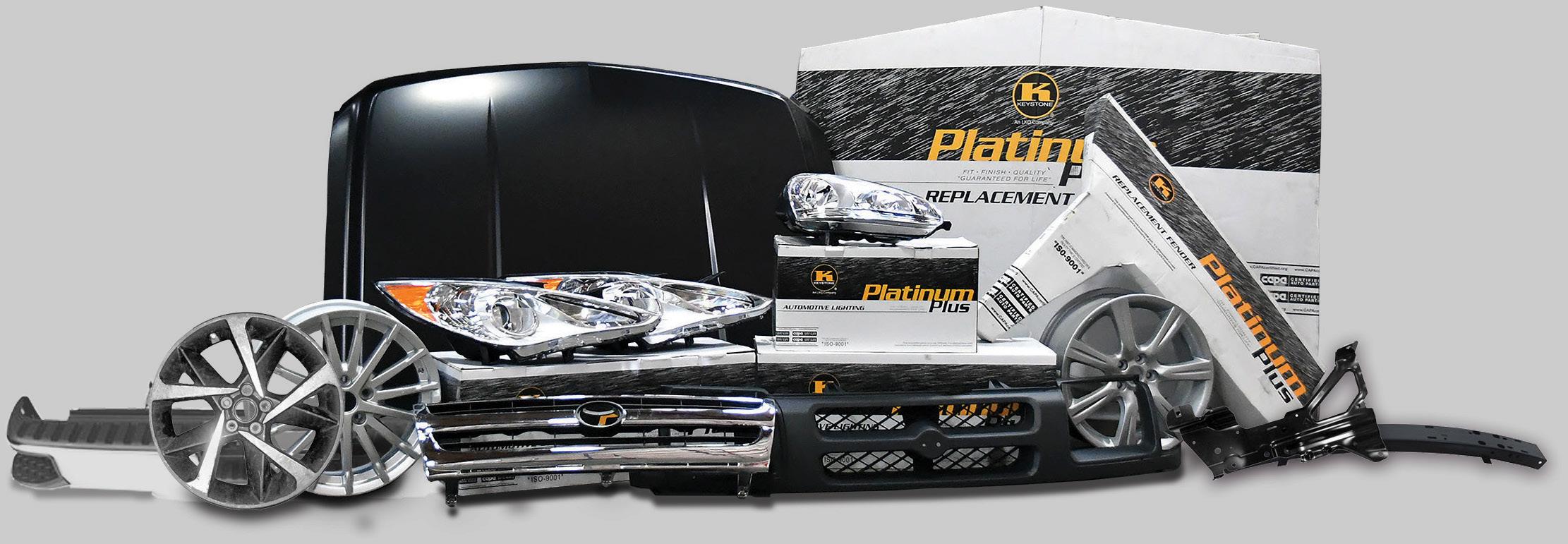












Paint | Aftermarket | Recycled | Transmissions & Engines Any P.A.R.T. Any Time. At LKQ, the “A” in P.A.R.T. stands for Aftermarket. The Keystone Platinum Plus parts line of aftermarket parts offers the highest standards and industry-leading Limited Lifetime Warranty. Over 90% of Keystone Platinum Plus aftermarket collision repair products are CAPA Certified. Buy Quality. Buy With Confidence. Buy Keystone Aftermarket Parts. Absorbers - Bumpers - Bumper Brackets - Bumper Reinforcements - Doors - FendersGrilles - Hoods - Lighting - Mirrors - Step Bumper Assemblies - Wheels Call Us : 866-LKQ-CORP Visit Us Online : www.LKQCorp.com Join Our Team! LKQ has been ranked as one of America’s Most Responsible Companies of 2024 by Newsweek and received certification as a Great Place to Work for 2024. To be a part of our growing team of passionate parts people, apply now by scanning the QR code.
WHAT CAN CARSTAR DO FOR ME?
C A R S





















































TA R i s a c o l l i s i o n re p a i r network made up of independent owners focused on delivering the highest qualit y repairs. By joining forces with over 700 other stores across Nor th America, you will be able to leverage a larger scale o suppor t to overcome any obstacle.






















OEM, INSURANCE, FLEET PARTNERSHIPS

ANALYTICS & KPI DASHBOARDS

NATIONAL

Contact Lori today if you want to learn more about joining at LKroeger@CARSTAR.com

DIGITAL MARKETING SUPPORT

REBATES
VENDOR DISCOUNTS AND
COLLISION UNIVERSITY: ONLINE LEARNING PLATFORM
OPERATIONS COACHING
















































































































































































